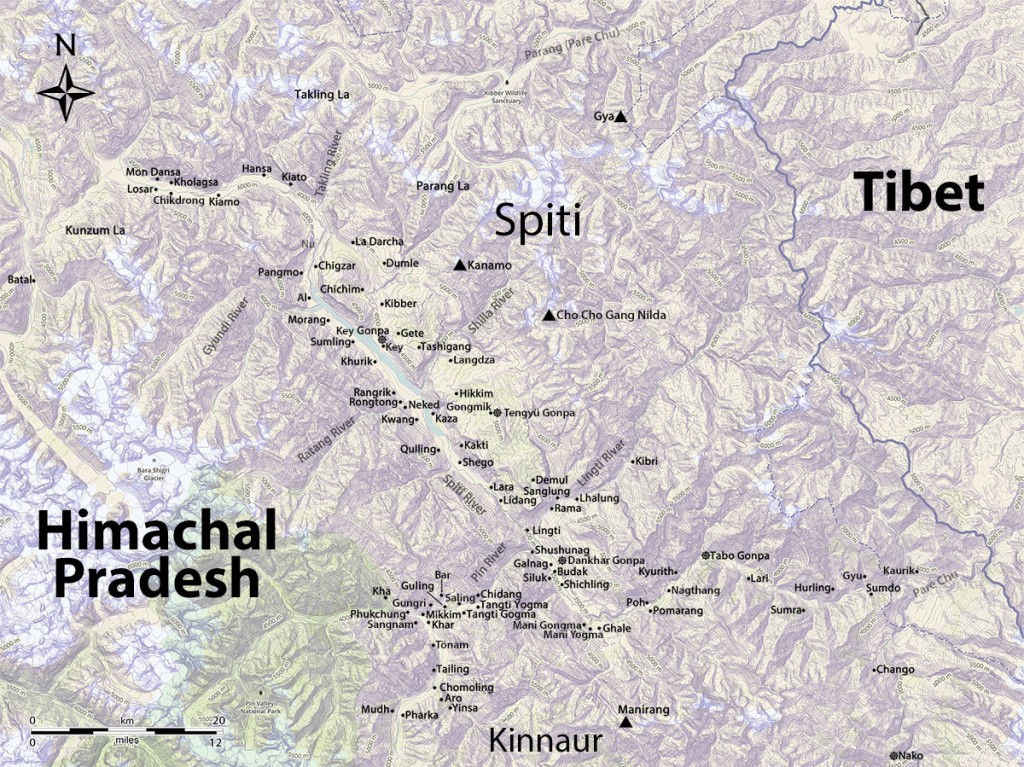
May 2015
John Vincent Bellezza
Welcome to Flight of the Khyung as we lift off to the western edge of the Tibetan plateau! The destination is Spiti, a region tucked away in the northeastern corner of the Indian state of Himachal Pradesh. This newsletter and others to follow will explore the early culture and history of Spiti. Until now, very little has been written about Spiti prior to the Buddhist renaissance in the late 10th century CE. In order to remedy that situation, I recently traveled there to systematically survey its beleaguered rock art, better document tombs and interview elders and luminaries.
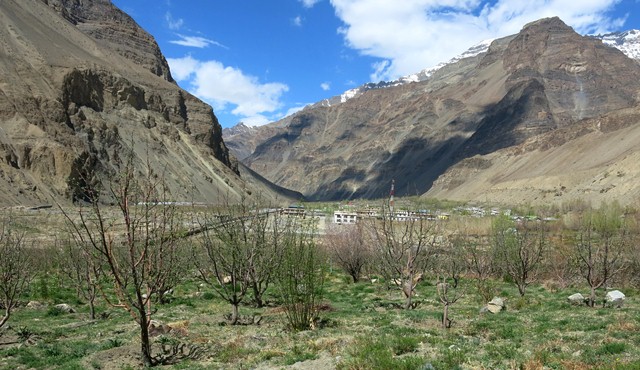
Fig. 1. The village of Tabo with an apple orchard in the foreground
The writing of this newsletter, as well as my academic articles and books over the last few years has been made possible by a recurring grant from the Shelley & Donald Rubin Foundation of New York. Mr. Donald Rubin himself and the Rubin Foundation director, Dr. Alex Gardner, have taken a personal and sustained interest in my research and exploration, making funds available so that I am able to write fulltime, a great privilege. Funding for travel to Spiti and field operations was generously provided by my friend Joseph Optiker of Switzerland, who is committed to the study of Tibetan history, culture and religion. Joseph also helped me launch three expeditions in Tibet and many of my recent successes in collecting archaeological evidence are his doing.
The Spiti Antiquities Expedition (SAE) lasted nearly four weeks (May 7–June 3), a time of intensive research and exploration. I traveled there with a team of highly motivated associates at the invitation of the Spiti Rock Art and Historical Society, a newly constituted body consisting of Spiti natives and international friends interested in preserving local rock art, ancient monuments and historical records. Under the guidance of Mr. Tsering Norbu, the Spiti Rock Art and Historical Society (SPAHS) paved the way for a very productive expedition, organizing transport, accommodation, guides, workers, and people to interview. Thanks to the SPAHS, the expedition never lost a step and was able to meet all of its objectives in just twenty-seven days of research and exploration. I heartily thank everyone concerned for helping to make the Spiti Antiquities Expedition of 2015 an unalloyed success!
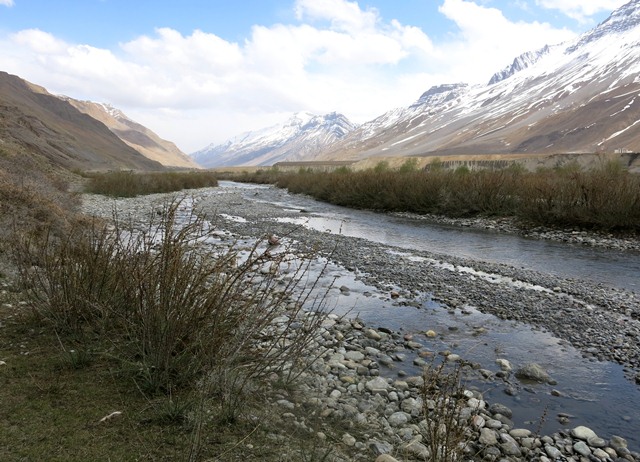
Fig. 2. A braid of the Spiti river upstream of Kaza
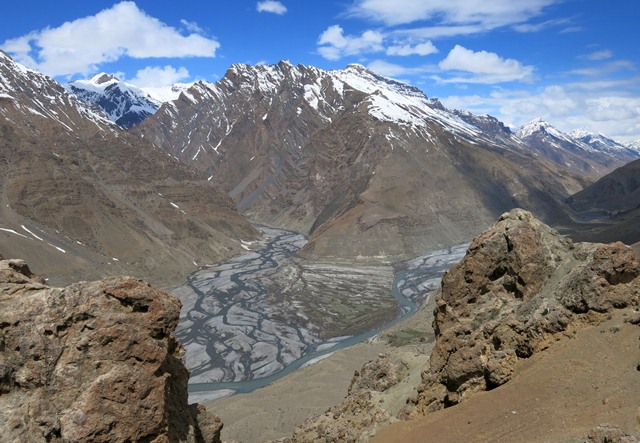
Fig. 3. The confluence of the Spiti and Pin rivers
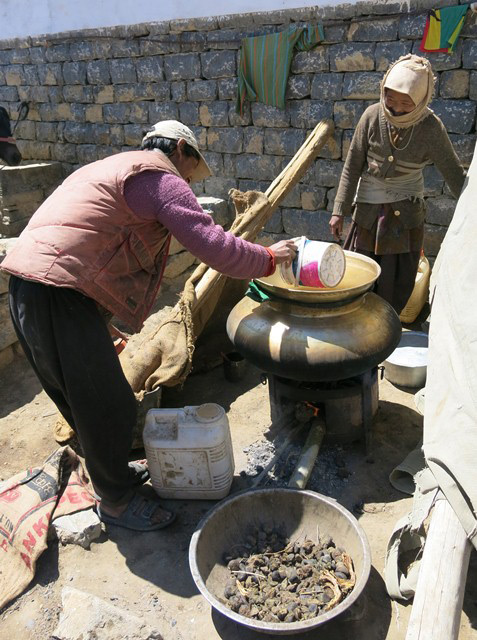
Fig. 4. A couple distilling liquor (A-rag) in the Pin valley
I was fortunate to be able to rely on a team of very competent associates in Spiti, who helped with every aspect of the expedition, from cooking and hauling gear to taking GPS readings and hunting down the next boulder with manmade markings. The Spiti Antiquities Expedition team included my son Eli Bellezza, Olivia Rix, Adam Rogerson (all from the UK) and Mihael Kavanaugh (USA), in addition to at least one or two persons from Spiti on every outing, who provided guidance and practical support. Eli Bellezza and Olivia Rix spent a month at the Library of Tibetan Works and Archives in Dharamsala preparing for the expedition.
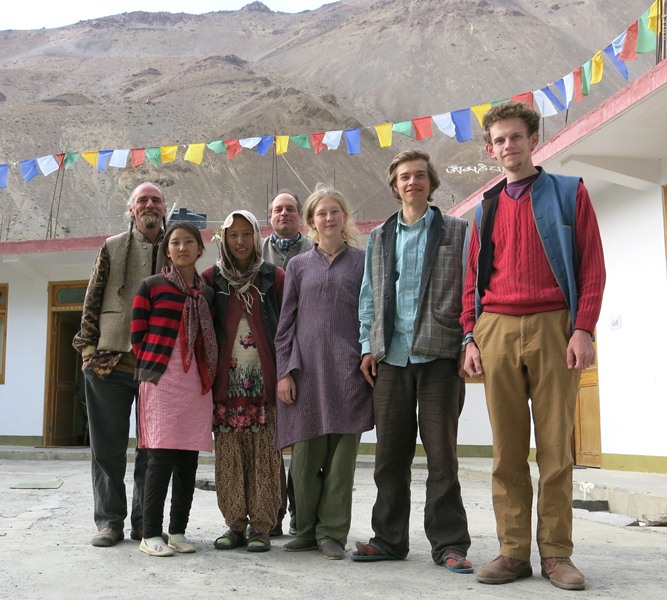
Fig. 5. The rock art documenting team at their guesthouse in Tabo
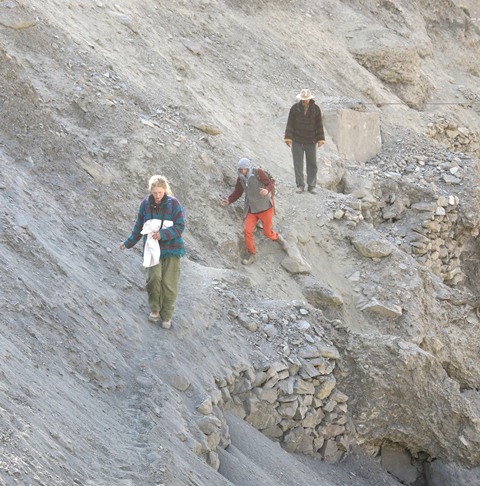
Fig. 6. Members of the SAE crossing a damaged section of trail on the way to a rock art site
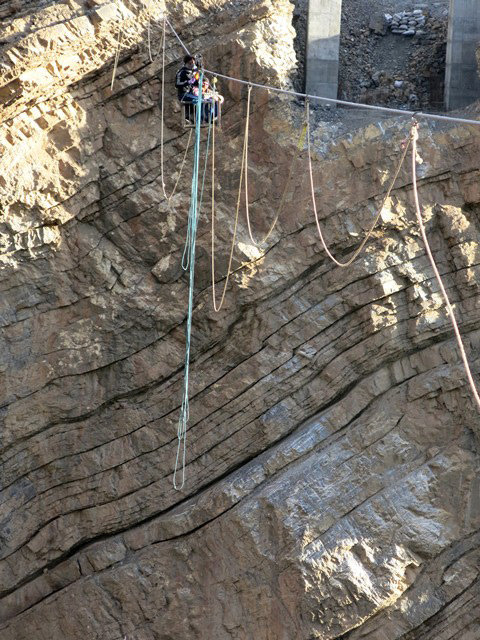
Fig. 7. The cable crossing to the village of Chichim (dKyil-khyim). This cable is approximately 200 m in length and is suspended about 250 m above the river. Known as a jhula in Hindi, a precursor to this kind of bridge was once located above the confluence of the Pin river (Diack 1899: 109). The narrow gorge of the Chichim cable crossing is subject to heavy crosswinds. The concrete pylon visible in the photo was constructed about twelve years ago, as part of a bridge that was never completed. The bridge, as it was designed, would not have been able to cope with the long span or intense wind-shear effect at the site.
The contents of the newsletter are:
1) Spotlight on Spiti
2) A Review of the Early Cultural History of Spiti – Part One
- Questions concerning the cultural and political territory of Spiti prior to the 10th century CE
- Archaic cultural traditions in the biography of Lotsawa Rinchen Sangpo
- The decree of Lha Lama Yesheö
Spotlight on Spiti
Spiti is a beautiful Trans Himalayan land of jagged snowy peaks, crystal clear mountain streams,* and amiable and hospitable people.† Traveling there is a real pleasure, a salubrious counterpoint to the hectic pace of modern life elsewhere. The people of Spiti enjoy an ancient culture and language closely related to those of western Tibetan, for they share a historical wellspring whose depths reach back into prehistory. It is this shared history and culture as well as common plateau geography that drew Spiti and western Tibet into the same circle of kindred relations.
On the physical and political geography of Spiti, see Kapadia 1999, pp. 25–32. The virtues of the Spitians were extolled by a number of authors writing during the British Raj. For example, Capt. Harcourt (1871: 73) characterized them as good-natured, cheerful, sociable, industrious and cooperative, etc. Diack (1899: 92) called the people of Spiti honest and sanguine.This article provides a synopsis of the sociocultural makeup of Spiti and its more recent history, subjects covered quite extensively in English language publications written over the preceding two centuries.* Many more specialized studies of Spiti’s religious culture (especially its relatively well preserved ancient Buddhist monasteries) and matters related to development and the environment have appeared in the last twenty-five years. These areas of study are only touched upon here. Spiti is a particularly attractive destination for those eager to see and study a region of western Tibetan cultural and ethnic composition, for it is an integral part of the Republic of India, a nation with strongly rooted democratic traditions.
The earliest direct reference to Spiti in Tibetan literature appears to be found in the 13th century CE historical text lDe’u chos ’byung, where it is spelled Spyi-ti. According to Gergan (De Rossi Filibeck: 2002, 320, 321) spyi means “general” and ti “water”. Following Gergan’s proposal, Handa (2001: 72) holds that the central location of Spiti between Ladakh, Guge and cis-Himalayan regions explains its name. Some Spiti elders claim that Bas-ti (Waters of the Hidden Valley) is the original name of the region, but this etymology is highly questionable, as it appears to reflect later Buddhist sacred geographic conceptions. In any event, a variety of spellings for Spiti are known in Tibetan literature. These have been tabulated in Shastri 2007, p. 37. In my opinion, Spyi-ti may mean ‘headwaters’, as derived from spyi-bo (crown, the top) and ti (a Zhang-zhung word for water also found in non-Tibetic languages of Kinnaur and Lahul).Spiti is located on the western margin of the Tibetan plateau, sandwiched between the Great Western Himalaya range and Transhimalayan ranges bounded by the Pare Chu (Pha-ri chu) river on the north, south and east.* Spiti centered around 32° 30” North Latitude, straddles the middle tier of the Tibetan plateau some 2500 km from its eastern extremity. The climate of Spiti is arid and continental with cold, snowy winters and dry, warm summers. The villages of Spiti are situated between 3140 m (Hurling; Hur-gling) and 4430 m (Gongmik; Gong-mig) in elevation. In addition to the string of villages in the main Spiti valley, the tributary valleys of Lingti (Gling-ti) and Pin (Sprin / Spyin / Spin) host a number of settlements.
The Pare Chu begins north of the Parang La (5580 m), the main pass linking Spiti to Ladakh. It flows in a northeastern direction before entering Ladakh and turning south. The Pare Chu then crosses into the Tibetan territory known as Chumurti (Chu-mur-ti), in the township of Chusum (Chu-gsum), Tsamda (rTsa-mda’) county (Tibetan Autonomous Region). According to a Tibetan Autonomous Region (TAR) administrative map produced in the Tibetan language, entitled Bod rang skyong ljongs srid ’dzin sa khul gyi sa bkra, the stretch of the Pare Chu in Tibet is called Rubshok Tsangpo (Rub-shog gtsang-po). Bending again, this time to the west, the Pare Chu reenters India at Kaurik (Khyu-rigs) and joins with the Spiti river at Sumdo (Sum-mdo). A sliver of territory in southeastern Spiti under Indian jurisdiction is still officially contested by People’s Republic of China (PRC). The disputed area includes Kaurik, Sumdo and the Gyu (rGyu) valley. Fortunately, both India and the PRC have stated that they are committed to a peaceful settlement of all outstanding border issues. Residents of Kaurik were resettled in Hurling and other places after the 1962 war with China. A number of families from the group of six Tibetan border villages known as Tshoshrib Sumkyil (Tsho-srib gsum-dkyil) also settled in Hurling and elsewhere in India. The location of the old southeastern border of Spiti and Tibet varies somewhat according to different sources. Some elders interviewed locate it at the shrine for Kongkong Lhamo (Kong-kong lha-mo; Undulating Goddess; her name refers to the local topography). This shrine is on the old bridle trail from Spiti to Guge (Gu-ge) and Gar (sGar) in Tibet. Traditionally, this was the only route to and from Spiti usually opened in the wintertime. The shrine of Kongkong Lhamo consists of a large circular cairn (location: 32° 03.949’ / 78° 34. 834’ / 3355 m). She is considered the protector of the lower gateway to Spiti and is thus called Lower Kongkong Lhamo (Mar kong-kong lha-mo). Kongkong Lhamo is in the retinue of Palden Lhamo (dPal-ldan Lha-mo) and is probably closely related to the protectress Dorje Chenmo (rDo-rje chen-mo; on this goddess, see Rahula 2013: 318–322; Klimburg-Salter 1997: 93–95). Her counterpart is the protector of the upper gateway to Spiti, Tö Drabla Shaktse (Stod dgra-bla shag-rtse). Other elders place the old frontier several kilometers up the Spiti valley at the Karti Naullah, which runs through the village of Hurling. This is supported by Francke (1914: 35), who states that Hurling and the bridge downstream at Zangzam are in Tibetan territory. However, Egerton (1864: 80) positions the border considerably further downstream, stating it is the Gyoondoo (rGyu) torrent. Egerton (ibid., 78) says that Hurling was uninhabited but that there were caves there for travelers. Tucci (1936: 93, 94) notes that the “desert” of Hurling is where three states converge: Spiti, Bashahr and Tibet.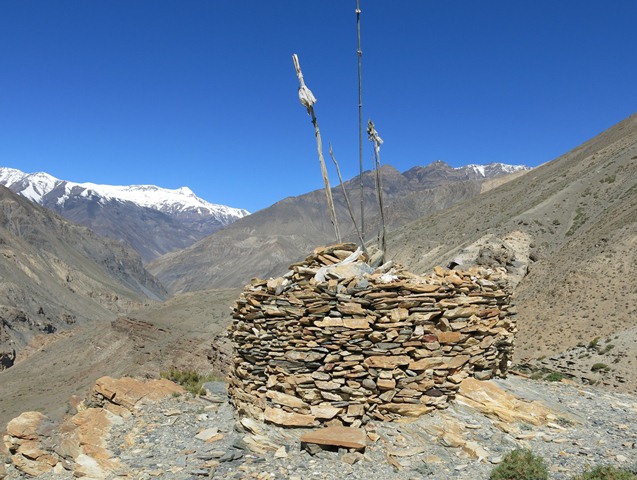
Fig. 8. The cairn (la-btsas) for Kongkong Lhamo.
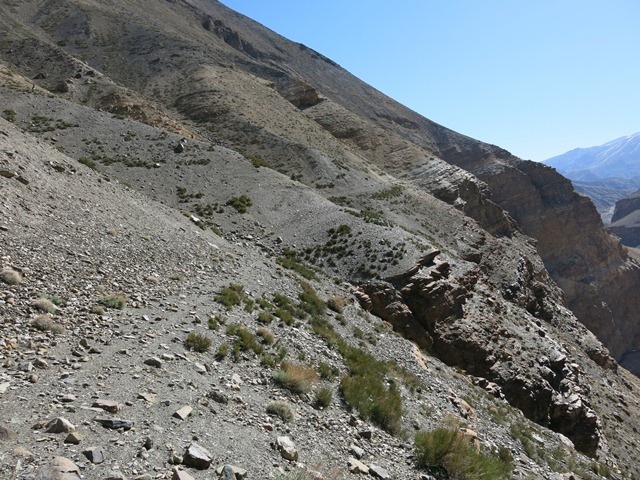
Fig. 9. The old bridle trail between Hurling and Gyu; situated as much as 300 m above the main road in the Spiti valley, this route is hardly used anymore.
The distinctive Pin valley is situated in the lap of the Great Himalaya range and has a more alpine climate than the Spiti valley proper. Its location on the north side of the Himalaya gives the Pin valley a less continental aspect, meaning that it is moister in the summer and snowier the rest of the year.* For example, in late May of this year the upper villages of Pin still had some snow on the ground, while villages in the main valley situated at the same elevation such as Lhalung (Lha-lung) and Dankhar (Brang-mkhar) were free of snow. Over the past three years, mud flows and water from a gorge in the lower Pin valley called Kyi Trokpo (Dkyil grog-po) have inundated the valley, causing lengthy road closures. After a couple decades of drier conditions in Spiti, the last couple of winters have seen higher snowfall, a welcome development. However, heavy monsoonal downpours during recent summers have proven very destructive.
On the creation of the Pin Valley National Park (675 km²), see Thukral, p. 32.In the Spiti valley there are still a few isolated pockets of large junipers (Juniperus tibetica). According to the oral tradition preserved by various elders in Spiti, this sacred tree was once far more common in the region. Diack (1899: 73) reports that substantial portions of the woodwork of houses comes from pencil cedars (junipers) located on the right bank of Spiti river near where it exits the Waziri. This refers to a place at or near Sumdo (Sum-mdo). Today, there are virtually no juniper trees left at this location. In the Gyu valley, groves of junipers under the protection of the local territorial god (yul-lha) still exist near the eponymous village. Reportedly, these groves were much reduced in size by road construction crews in the aftermath of the border war with the PRC in 1962. It is said that further up the Gyu valley white birch grows. In the valley bottom near the old abandoned village of Gyu, there is a tree shrine for an old tamarisk called Lha Ombu Jönshing (Lha ’om-bu ljon-shing). This sacred tree is thought to be the gathering place of water spirits (klu).*
A large volume spring issues from underneath a mani wall in the contemporary village of Gyu. A shrine for the water spirits (klu-khang) was built there and at least two more in the fields above the village. Gyu is situated in the valley bottom and is potentially susceptible to flooding, helping to explain the care taken there to appease the water spirits. The old village of Gyu (32 08.280’ / 78 33.767 / 3725 m), overlooking the confluence of two branches of the Gyu Chu, was abandoned after a flood wiped out agricultural fields situated below the settlement.
Fig. 10. The tamarisk shrine in the Gyu valley.

Fig. 11. A shrine to the water spirits at the mani wall with a high volume spring below it, Gyu village.
There are a few isolated ancient junipers in the village of Poh (sPo/sPog),* the vestiges of a forest that once extended to the adjoining mountain slopes, say local elders such as Lobsang (Blo-bzang, aged seventy-eight), the village doctor (Em-chi). Reflecting their sacred status, each of the oldest trees in Poh has a proper name such as Bumpa (Bum-pa; Vase) and Drangye (Brang-rgyas; a kind of offering cake). The most extensive groves of junipers remaining in Spiti are said to be found in Sanglung (Bsang-lung) in the Lingti (Gling-ti) valley. In the biggest village of the Lingti valley, Lhalung (around sixty households), juniper is still regularly burnt as fuel by villagers despite a supposed ban on this practice in Spiti issued by the Himachal Pradesh Forest Department. Larger trees, perhaps as much as 300 years old, are being consumed as firewood. Even if only dead wood is collected its wholesale removal from the groves will have a deleterious impact on the local ecology. There are said to be junipers in a deep gorge underneath the high peak of Chocho Kang Nyilda (Co-co gangs nyi-zla; called Shilla in Hindi).† In houses and other buildings in Spiti more than 150 years old, juniper beams, pillars and capitals are commonplace.
As for the rendering of Spiti place names using the Roman alphabet, spellings that have become customary are employed, although they may be less accurate transliterations of the Tibetan. For example, Kaza for dKar-mdzes (Beautiful White) would be better rendered as Kardze, the administrative headquarters of Spiti. Anyway, neither of these names are the original one for the settlement. The story of a local man consorting with the goddess of this mountain is told in Thukral 2006, pp. 49–51. Co-co gangs nyi-zla can be translated as Sun and Moon Elder Sister Snow Mountain.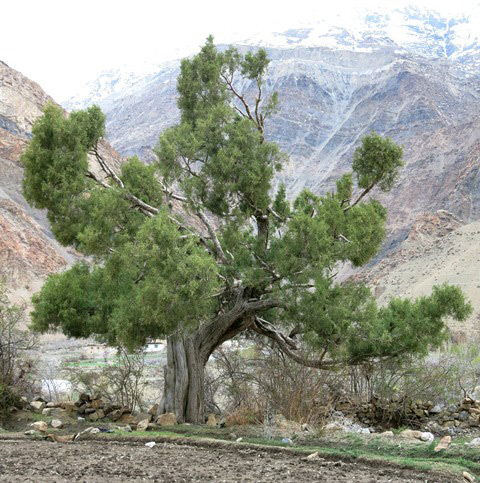
Fig. 12. A sacred juniper in the village of Poh.
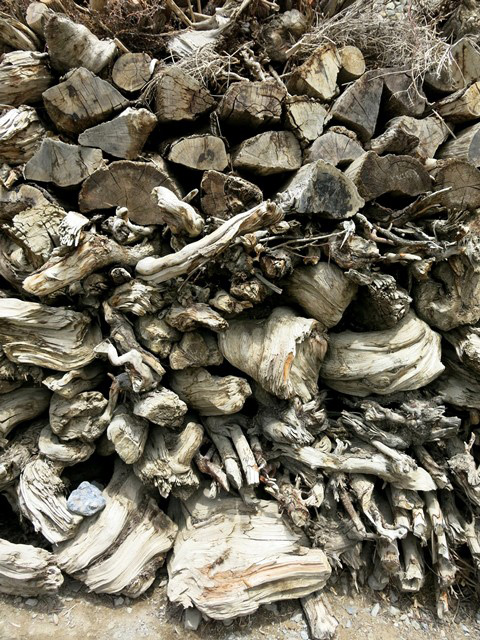
Fig. 13. Juniper firewood piled up high in Lhalung village.
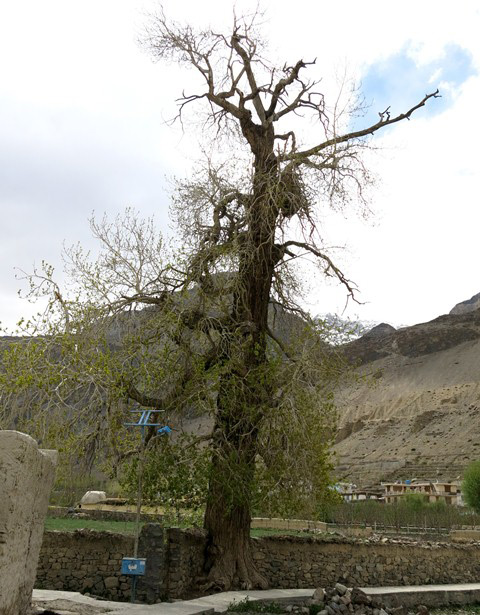
Fig. 14. A sacred poplar tree in Tabo, the haunts of local spirits. This might be the oldest specimen of this species in Spiti.
The roads through Lahul, Kinnaur and Spiti are rather rough in sections despite decades of construction work. There are a number of places where slides engulf the way from time to time. Twenty-five years ago, there were hardly any Indian tourists in this remote region, now they are seen on a regular basis. However, I do not think Spiti will become a mass tourism destination due to its remoteness, limited size, the condition of the road, and the lack of an airport.
I first went to Spiti in 1989 and again in 1992 and 1994. In terms of culture, society and the environment much has changed since those early visits and the situation continues to change. Most obvious even to a casual observer is the proliferation of motor vehicles, larger bazaars, multistoried concrete buildings, growing tourism from down country and abroad, new link roads, irrigation and other infrastructure projects, access to the internet, and rising levels of education, etc. It is also evident that there is now a wider gap between the rich and poor in Spiti, as in so many other places worldwide. There is a common perception among Spitians or Spi-ti-pa that social relations are not as cooperative or close as they once were. Many traditional festivals, opportunities for people to mix freely and share their time and resources, have been severely scaled back in recent years. For example, the summertime horseraces and the excitement it brought to villages have now almost completely disappeared.
In recent years, the push to expand the area under horticulture and ill-advised infrastructure development projects have harmed Spiti’s natural environment. Yet, there is much to be sanguine about, for the people of Spiti are endowed with three very powerful faculties that will continue to prove a great asset: their land, their language* and their religion. While there is undeniably a great social and cultural transition underway, by focusing on economic advancement, religious regeneration and environmental protection, problems associated with modernization can be ameliorated.
The Spiti dialect is generally considered by its speakers to be closer (in grammar and vocabulary) to Classical Tibetan than to dialects of Central Tibetan. An acquaintance with their tongue shows that this assessment is generally accurate. The Spiti dialect can be grouped under the rubric of ‘western Tibetan’. It is close to that spoken in the adjoining region of Chusum (Chu-gsum) in Tibet. The dialect in the village of Gyu is nearest to those spoken in western Tibet, while the dialect of the Pin valley appears to be the most different. The dialect of Spiti is quite closely related to that of upper Kinnaur (Hang-grang / Hrang-trang) and the two upper valleys of Lahul (Gar-zha), but it exhibits fewer archaisms. All of these dialects of the western Himalaya are generally referred to as Töked (sTod-skad). The dialect of Spiti is also closely aligned with the dialect of the Changpa (Byang-pa) in upper Ladakh, but much less so with Ladakhi and Balti. One prominent phonological feature of the Spiti dialect is the elision of the subscribed y (ya-btags); e.g., pha for phya. Also, the subscribed r (ra-btags) in certain words is dropped when spoken; e.g, dang for brang. Another characteristic feature of this dialect is the voicing of the prefixed b and m in the second syllable of a word.Increased opportunities for income generation in recent years have significantly improved the material lives of people in Spiti. Apple orchards in the lower part of the region produce some of the best fruit in Himachal Pradesh. The cultivation of green peas as a cash crop has also added substantially to local incomes (the peas of Spiti are available in August, when there are few other fresh sources in India). There are ever more business opportunities opening up in tourism, retail sales and construction, as Spiti more closely integrates with the rest of India. The central and state governments have gone a long way to providing employment and other vital services to Spitians. Rapidly rising levels of education among youth is also a cause for optimism, as they will contribute much to the advancement of their homeland.
The religion of Spiti is Tibetan Buddhism, which was firmly established in the region at the end of the 10th century CE. As is well known, there are six major monasteries in Spiti:
- Tabo (Ta-po; est. 996 CE); Gelukpa (dGe-lugs-pa) sect. On its establishment, see Klimburg-Salter 1997; Rahula 2013; on the various Tibetan spellings for this monastery, see Shastri 2007: 45.
- Dankhar (Brang-mkhar; 11th century CE?): Gelukpa sect. On its establishment, see Laurent 2011.
- Lhalung (Lha-lung, est. circa 12th century CE): Gelukpa sect. On its foundation, see Tropper 2008.
- Key (Dkyil-dgon nor-bu dge-’phel; est. circa late 14th century CE): Gelukpa sect. Referring to the text Baidurya ser po (written 1898), Vitali (2000: 82–84) observes that a disciple of Je Tsong Khapa (rJe tsong kha-pa) was involved in establishing the monastery.
- Tengyü (sTeng-rgyud, est. circa 13th century CE): Sakyapa (Sa-skya-pa) sect.
- Urgyen Sangngak Choeling (U-rgyan gsang-sngags chos-gling, est. at least 500 years ago): Nyingmapa (rNying-ma-pa). According to Tucci (1936: 71), the Nyingma practitioners of the Great Perfection (rDzogs-chen) tradition in the Pin valley are tall and sturdy and with beards and long, knotted hair. On these itinerant troops of entertainers known as buchen (bu-chen; literally, great son), who propagate Buddhist values, see Sutherland and Tsering 2011; Diack 1899, pp. 88, 89; Tobdan 2015b, pp. 64–84.
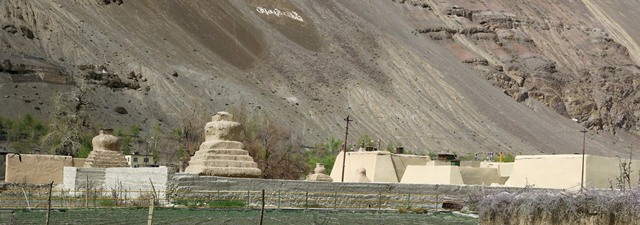
Fig. 15. The old monastic precinct at Tabo.
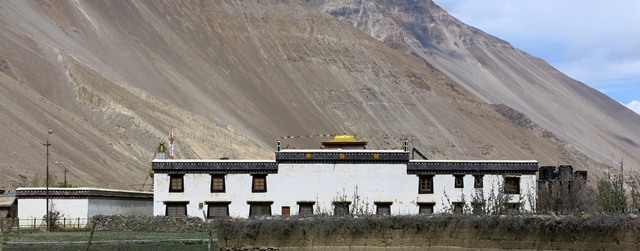
Fig. 16. The modern monastic complex at Tabo.
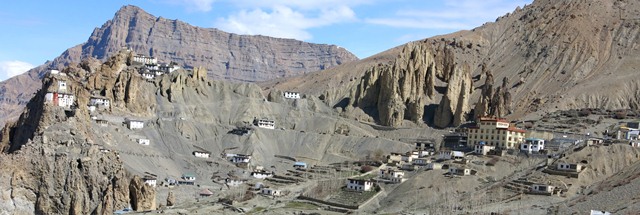
Fig. 17. The modern monastery at Dankhar (large yellow building on the right side of the photograph) and the old monastery in the crags (left side of the image).
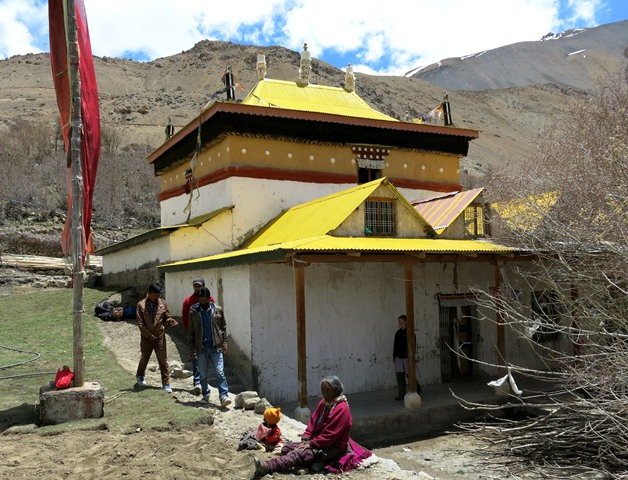
Fig. 18. The ancient temple (gSer-khang) at Lhalung.
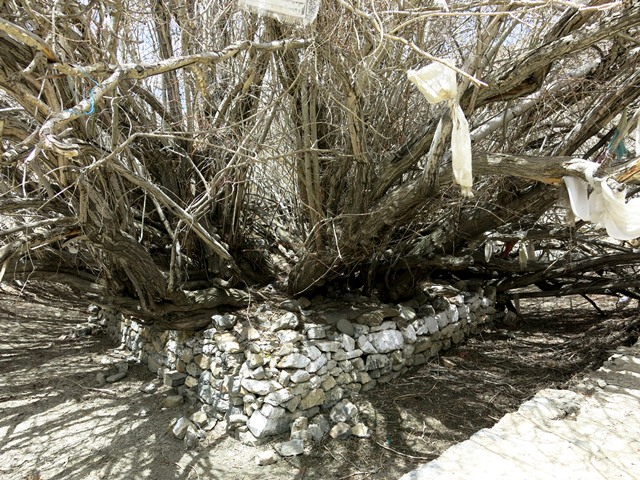
Fig. 19. An ancient willow tree at the temple in Lhalung. According to local folklore, it sprouted when the famous propagator of Buddhism, Lotswa Rinchen Sangpo planted his walking stick in the ground at this location. It appears that this action subdued the local water spirits, permitting a Buddhist chapel to be founded there.
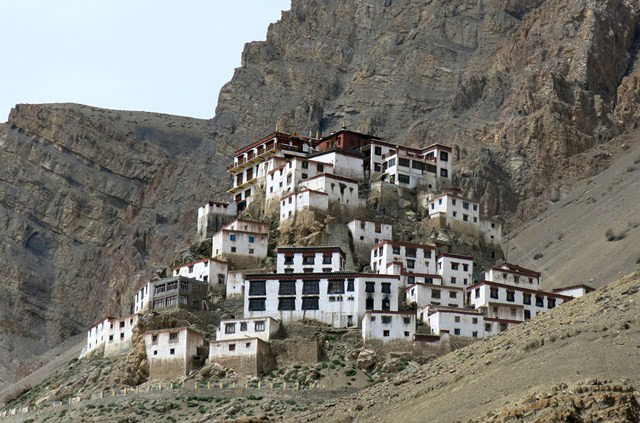
Fig. 20. The acropolis of Key monastery.
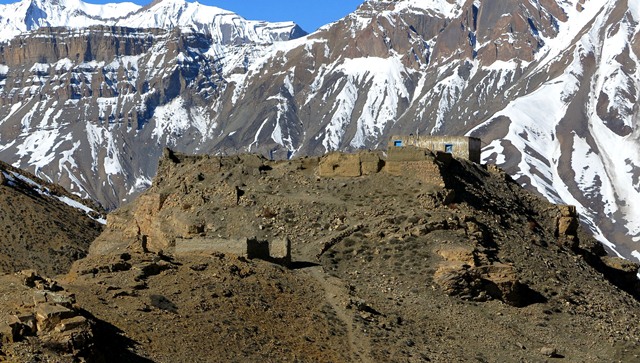
Fig. 21. The old Tengyü monastery, which was abandoned in 1975 after an earthquake cut off its water supply. The new Tengyü monastery is located in the village of Gongmik, approximately 15 km to the east.
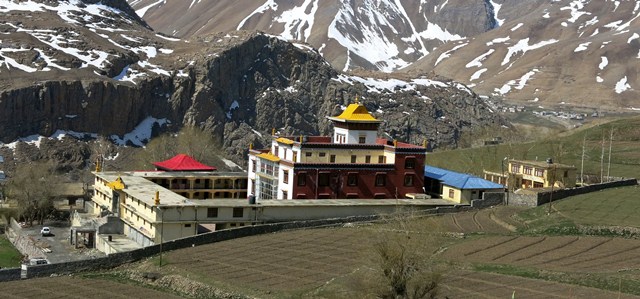
Fig. 22. Urgyen Sangngak Choeling monastery in the Pin valley.
There is also an ancient chapel in the village of Tashigang (bKra-shis-sgang) of special note, locally called Gonchung Tashigang Kyil (Dgon-chung bkra-shis-sgang dkyil). On the roof of this small building is a chorten (mchod-rten), the interior of which is accessed from inside the chapel. On the inner base of this chorten are traces of murals. According to local lay practitioners (sngags-pa), these paintings are as old as those at Tabo. On art-historical grounds the murals of Tashigang can be dated to the 11th–13h century CE. Surrounding the rooftop chorten are four turrets (lcog) with blue sheep horns and other indigenous style receptacles and offerings for the local protective spirits.
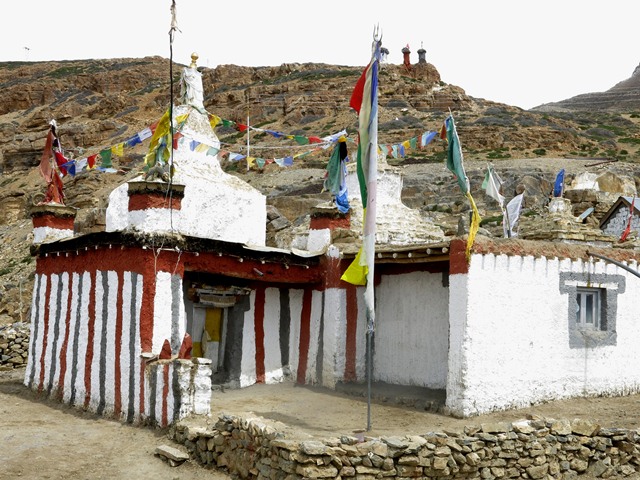
Fig. 23. The ancient monastery of Gonchung Tashigang Kyil in Tashigang village.
The population of Spiti is quite homogenous, although like in adjoining Ladakh and Kinnaur there are certain caste distinctions. The bulk of Spiti’s approximate population of 12,000 is known as chechang (che-cang / che-gzhang; spelling?), the land-owning class of agriculturalists. They are divided into three groups of varying socioeconomic strength: the major households (khang-chen), minor households or retired people (khang-chung) and lesser farmers (dud-’thul / dud-khral).* The chechang are classified by the Indian government as a “Scheduled Tribe” and are thus eligible for affirmative action programs in hiring and education and other schemes to improve their economic status.
For a description of the social classes of Spiti, see Tashi Tsering 2014. Tashi Tsering and Ishimura (2012: 6) divide the khangchen households into four tiers of descending social status: 1) Nono of Kyuling (Kyu-gling), 2) smaller Nono households of Demul (rGyu-dngul), Pin valley and Mani (Ma-ṇi), 3) hereditary doctors (Em-chi) and priests (jo-ba), and 4) regular families.There is a caste of (professional musicians) in Spiti known as beda/beta, who play tambourines (da’-’o), kettledrums (da’-man) and oboes (su-na) and sing ballads at festivals and private celebrations. It is said by some elders in Spiti that the word beda is derived from the Tibetan ’bud-pa (to blow, as into a musical instrument), but this etymology is uncertain. Like the names of their musical instruments, Persian roots for the word beda may be indicated.* According to the beda Iphi Tshering Gadrup (I-phi (Central Tibetan = A-phyi) Tshe-ring dga’-grub) of Gungri (dGung-ri) village, aged seventy-five, much of her musical tradition originally came from Ladakh.† She says that the beda were once court musicians for the local rulers (No-no). Iphi Tshering Gadrup is reputed to command a vast repertoire of songs, but she observes that there is no one left willing to learn them. Her style of singing is similar to the beda of Ladakh, in which western Tibetan, Pahari and other regional influences can be heard. The rich tradition of songs and dances among the landowning classes is also in steep decline, as I heard from various elders in Spiti such as Iphi Tsehring (I-phi tshe-ring, born 1934) of Kibbar.
Jahoda (2009: 55 [n. 40]) gives various spellings for beda in Tibetan, Hindi and Urdu but without differentiating one from the other. According to Diack (1899: 93), the beda sustained themselves by begging, making horse whips and bracelets of shell, and as musicians at weddings. This view is supported by Jahoda (2009), who believes that the court musicians of Ladakh (mkhar-mon) influenced the musical culture of the beda in Spiti. Similarly, Tashi Tsering (2014: 58–64) reports that one of his informants stated that the beda were introduced to Spiti during Ladakhi rule.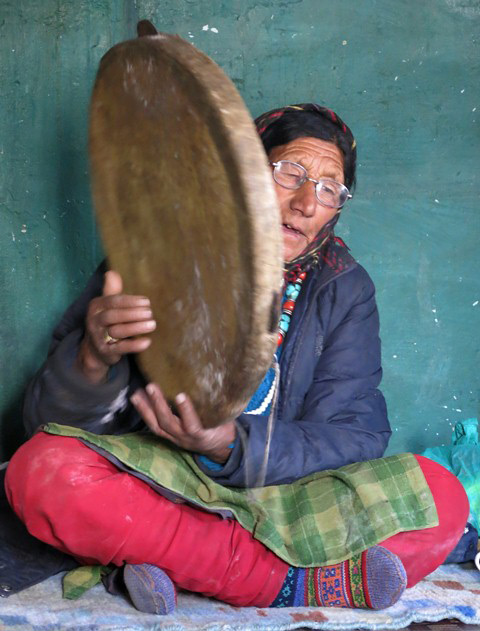
Fig. 24. Iphi Tshering Gadrup singing and playing her tambourine, Gungri village.
A caste of artisans in Spiti is called zopa (bzo-pa) or garwa (mgar-ba) and includes those who worked traditionally as blacksmiths, silversmiths and goldsmiths.* The beda and zopa are classed by the Indian government as ‘Scheduled Castes’, reflecting their weaker sociopolitical status. Unlike Kinnaur, where professional weavers have their own caste called chamang, weavers (’thag mkhan-pa) in Spiti they often belonged to the landowning groups.
Harcourt (1871: 76) reports that there was excellent blacksmithing in Spiti, with iron bits, buckles, stirrups, and fluted pipes some ornamented with gold, as well as brass and copper ink bottles and engraved steel pen cases, being produced According to Tashi Tsering and Ishimura (2012: 9), it was only in 2009, after political agitation, that boys belonging to the zopa caste could become monks but only in monasteries outside Spiti.Spiti forms an administrative subdivision of the Lahul-Spiti* district (pop. 31,528; 13,833 km²) of Himachal Pradesh. This district was formed in 1966, six years after the creation of the state of Himachal Pradesh. The population of Spiti is approximately 12,000.† The chief administrative officer of the Spiti subdivision is known as an ADC (Additional Deputy Commissioner), while its chief judicial officer is the SDM (Sub-divisional Magistrate). The seat of the government in Spiti is Kaza.
Also commonly spelled Lahaul-Spiti and Lahoul-Spiti. The actual population figure varies according to various sources. It is 12,445, according to the official Lahaul Spiti government website (http://hplahaulspiti.nic.in/fact_file.htm); 10,751 (as of December 31, 2011), according to the Development Block Office, Kaza; and 11,852 in the 2010 census (Tashi Tsering and G. Ishimura 2012: 5). The population of Spiti according to the 1961 census was 5276 (Kapadia 1999: 26).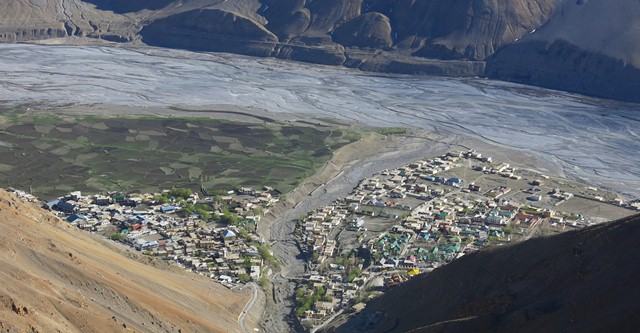
Fig. 25. A view of Kaza from high above the town.
It appears that Spiti was part of the Guge-Purang kingdom of western Tibet for much of the period from the late 10th century until 1630 CE.* According to the Chronicle of Ladakh, it was Detsukgön (lDe-gtsug-mgon), one of the three sons of the founder of the Guge-Purang kingdom, Nyima Gön, who was given Spiti and Zanskar (Petech 1977: 54). From the mid-17th to the mid-19th century, Spiti bowed to the hegemony of Ladakh, but at times it also succumbed to cis-Himalayan powers such as Bashahr and Kullu.† As a subsidiary state of Ladakh, Spiti was ruled by hereditary governors known as Nono, who were considered first among landowning equals.‡ In the 1830s and 1840s, Spiti was attacked by the Dogras and Sikhs (Thakur 2001: 28). It appears that Spiti was devastated by the Dogra general Zoravar Singh (Tucci 1936: 57). With the Treaty of Amritsar, Lahul and Spiti came under British jurisdiction in 1846 (Thakur 2001: 25, 29). Spiti was placed under the direct administration of the Assistant Commissioner of Koolloo (Kullu) in 1849 (Egerton 1864: 76).
The most extensive source for the history of the Guge-Purang kingdom in English is Vitali 1996. Also see Petech 1997, pp. 230–239. Jahoda (2009) provides a review of the political relationship between Spiti and Ladakh from the mid-17th to mid-19th century. He includes brief discussions on ecclesiastic lands known as Choeshi (Chos-gzhis) in Spiti, and the role of the goddess Dorje Chenmo (rDo-rje chen-mo) in the politics of Spiti and Ladakh. That the Nono was a junior partner in this relationship is reflected in the title itself, which literally means ‘younger brother’ in Ladakhi. In Spiti however no-no is a term of respect similar to chocho (co-co / jo-jo; literally: older brother) and gaga (ga-ga; literally: gentleman). For information compiled on the Nono in the British Raj period, see Tobdan 2015, pp. 85–93.In British times, the Nono was demoted to the position of an honorary magistrate who could levy certain fines as punishment and collect taxes. Lesser branches of the family with some political privileges were referred to as the Small Nono (Chhota Nono) by the British. With the formation of the state of Himachal Pradesh in 1960, the Nono lost all special political privileges and was demoted to the position of an ordinary citizen.
The current Nono is Sonam Angdui (bSod-nams Dbang-’dus, born 1961), a courteous and unassuming man whom I had the pleasure of meeting on several occasions during my recent trip to Spiti. He works as a Child Development Project officer in Kaza, but his main residence is across the valley in the village of Qulling (sKyid-gling). Sonam Angdui expressed a commitment to preserving and propagating Spiti’s culture and language. He is at the forefront of establishing the Spiti Buddhist Association, an organization whose purpose is to revitalize local customs and traditions.
Upon learning that ancient rock art and cemeteries are being despoiled at a very rapid rate in Spiti, the Nono recommended that a campaign of preservation be launched through the local administrative apparatus (the offices of the ADC and SDM), in order to reach all village committee heads (gram panchayat pradhan) and thereafter to the general public. Certainly, it is only through a promptly initiated and well-executed project for conservation that Spiti’s threatened archaeological wealth will be preserved for posterity.
A Review of the Early Cultural History of Spiti – Part One
This article examines ancient historical and cultural traditions in Spiti, especially those relevant to the analysis and interpretation of the archaeological record of the region. Spiti has roots that reach far back in time, however, very little of its history prior to the 10th century CE has been recorded. It was only with the establishment of the Guge-Purang (Gu-ge-Pu-hrang) kingdom and the second diffusion of Buddhism (bsTan-pa phyi-dar) that Spiti emerges from obscurity, assuming a cultural and social identity still recognizable today.
1. Questions concerning the cultural and political territory of Spiti prior to the 10th century CE
There are no local legends, historical sources or archaeological evidence for the wholesale displacement of an older population by invaders or colonists since the demise of the Zhang Zhung kingdom in the 7th century CE. Thus it appears that elements of the current population have been long settled in Spiti. This resident population is of Tibetan stock, however, it may have culturally and linguistically evolved over time. In physical appearance and in culture and language, Spiti does not differ much from adjoining areas of Tibet.
Tibetan historical texts state that Spiti was one of ten administrative/military districts that comprised Zhang Zhung,* which existed as a separate kingdom in Upper Tibet† until its defeat by the Tibetan kings in the mid-7th century CE. Zhang Zhung went on to become one of seven major regions of the core or plateau part of the Tibetan empire.‡ The districts of Zhang Zhung were referred to as tongde (stong-sde; divisions of a thousand), indicating that they were each composed of 1000 sections or units. It seems that these units consisted of individual households or small groups of closely related agriculturalists or pastoralists.
For a broad survey of Zhang Zhung derived from Tibetan literature, the oral tradition and archaeology, see Bellezza 2008; 2014a; Richardson 1998. The geographically interrelated Changthang (Byang-thang) and Tö (Stod) regions of western and northern Tibet. Other major regions of Tibet in the Imperial period were (sPu-gyal bod; Central Tibet), Sumpa (Sum-pa; north central Tibet), Azha (A-zha; northeastern Tibet), Minyak (Mi-nyag; far northeastern Tibet), Jang (lJang; southeastern Tibet), and Mon (Mon; southern Tibet).There are two well known Tibetan historical references to Spiti pertaining to its inclusion in the ten tongde of upper (stod) and lower (smad) Zhang-zhung during the Tibetan empire period (circa 629–851 CE). The earliest source is the religious history lDe’u chos ’byung (13th century CE), where Spiti is one of five tongde in lower (smad) Zhang Zhung: Chiti Tongbu Chung (Spyi-ti stong-bu chung). With its placement at the end of the list and literal meaning, tongbu chung (little divisions of a thousand) denotes that Spiti formed a smaller district than others enumerated (cf. Tashi Tsering 2013: 535). In the historical text mKhas pa’i dga’ ston (mid-16th century CE), an analogously structured account renders the district of Spiti as Chide Tongbu Chung (Ci-de stong-bu chung), ci reflecting phonological qualities of central and eastern Tibetan dialects (cf. Tashi Tsering 2013: 536, 537).*
The locations of the ten tongde of Zhang Zhung given in lDe’u chos ’byung and mKhas pa’i dga’ ston have been the object of much scholarly debate over the last 50 years, some of it well reasoned, some of it highly speculative. On the districts of lower Zhang Zhung, see Bellezza 2008, p. 271; Bellezza 2011a, pp. 58, 59; Vitali 1996, p. 433 (n. 722). For a discussion of the localization of the districts of lower Zhang Zhung, which also cites the work of other scholars, see Zeisler 2009-2010, p. 391; Tashi Tsering 2013, pp. 535, 536; June 2013 Flight of the Khyung. With the inclusion of Spiti, all five districts of lower Zhang Zhung appear to be located on the southwestern portion of the Tibetan plateau: Gug-ge / Gu-ge (well-known district in what is now rTsa-mda’ county), Gu-cog / Cog-la (probably badlands region in western rTsa-mda’ county), Spyir-rtsang / Spyi-gtsang (appears to refer to headwaters region in the vicinity of Mount Ti-se / Kailash), Yar-rtsang / Yar-tshang (appears to refer to the upper stretch of the Yar-lung gtsang-po / Brahmaputra river). The word (l)cog in Gu-cog seems to describe the peculiar geography of the region and could allude to both its many pinnacles and flat-topped mountains. In the Old Tibetan funerary ritual text Pt 1060, Gu-ge and Gug-lchog (sic) are said to have supplied the subjects for the Zhang Zhung kingdom (Bellezza 2008: 523). Spyir-rtsang / Spyi-gtsang, (if we minimize the significance of what appears to be the adjectival form spyir) could literally mean ‘head of the river’ (from spyi-mo), ‘common river’ / general river (from spyi) or ‘all-covering river’ (from spyi-khyab). In each of these glosses a common riverine source or nexus is suggested, as is found around Mount Ti-se. The harder-to-identify locations of the five districts of upper (stod) Zhang Zhung do no concern us here.It is worth pondering what is actually signified by the inclusion of Spiti in Zhang Zhung territory, as maintained in the two Tibetan historical references we have examined. This material citing the ten tongde of Zhang Zhung refers to the administrative system instituted by the Tibetan emperors (btsan-po) sometime after the defeat of Zhang Zhung in the 640s CE.* This administration had military overtones; each tongde or district was commanded by a tongpön (stong-dpon).† Thus, the ‘little’ tongde of Spiti indicates that this region was not only an administrative subdivision of lower Zhang Zhung (southwestern Tibet), but also a source of soldiers and military provisions for its war machine, as well as a possible staging area for military operations. It is important to stress that this association of Spiti with Zhang Zhung territory says very little in itself about the cultural, linguistic or ethnic makeup of the region prior to the mid-7th century CE.‡
The Old Tibetan Annals states that Zhang Zhung was divided into lower (smad) and upper (stod) halves, each with five tongde (Dotson 2009: 39, 41). The ten tongde enumerated in Buddhist historical sources formed a tride (khri-sde; divisions / units of 10,000). This term is often used to characterize the Zhang Zhung polity in Bon religious texts. In Bon literature, however, one or more tride (18 in some accounts) of Zhang Zhung are set in prehistoric times, and are associated with legendary figures such as the founder of the kingdom, Triwer Larje (Khri-wer la-rje). On the tride of Zhang Zhung in Bon sources, see Bellezza 2008, pp. 251, 255, 256; 2011a, pp. 69, 70, 81–83. It also does not necessarily say anything about the political orientation of Spiti before the 7th century CE. Prehistoric political associations of Spiti with Zhang Zhung are only hinted at in Yungdrung Bon sources, and these are mythic and legendary accounts, not historical ones per se. It is therefore not clear whether or not Spiti was a constituent part or a vassal state of a prehistoric Zhang Zhung polity, or whether it had some other political affiliation. Handa (ibid. 103) contends that it is unlikely a “pre-Buddhist primitive chief of some Tibetan kingdom” could have dominated “far-flung Spiti. However, I question Handa’s assessment that proximate areas of the Tibetan plateau had no effect on the political life of Spiti. The huge geographical scope of Upper Tibetan culture and its affinities with Spiti, the highly developed residential and ceremonial infrastructure of upland Tibet indicative of a civilization, and the region’s strong geographical links to Spiti encourage us to seek a political dimension in the prehistoric relationship between the two territories.As I have shown in various publications, an integral paleocultural zone in Upper Tibet is discernable in the archaeological record. Based on the areal distribution of two kinds of sui generis funerary pillars, it has been determined that a large expanse of territory, situated between Namru (gNam-ru) in the east and Ruthok (Ru-thog) and Purang (Pu-hrang) in the west, possessed a remarkable degree of cultural coherence in the funerary arena (Bellezza 2011a). The dating of these funerary monuments has still not been established with precision, but indications from the radiocarbon dating of proximate tombs, typological study of the structures and the presence of adventitious rock art point to a periodization from the early 1st millennium BCE to perhaps as late as the rise of the Tibetan empire in the 7th century CE. The rock art record of this 300,000 km² region extends its unitary cultural characteristics to encompass religious, symbolic, economic, political and technological facets of ancient life prior to the Imperial period. This spectrum of common cultural features is reinforced by the remains of all-stone corbelled buildings, quadrate funerary enclosures, mountaintop cubic tombs, and cubic shrines throughout Upper Tibet.
The hallmark funerary pillar monuments of the high plateau, however, have not been detected in the badlands region of Guge. The absence of these defining monuments of the Upper Tibetan paleoculture zone in Guge may possibly be explained by its different topography, lack of suitable stones (structural aspects) and/or by cultural variations (functional aspects). That some kind of minor divide separated Guge and the higher adjacent regions of Tibet is noted in the Yungdrung Bon tradition, but the nature of this partition in unclear (Bellezza 2011a: 61, 62, 68). Nevertheless, Guge and other portions of Upper Tibet share in common a rock art tradition, all-stone corbelled residential structures and ceramic types, crucial archaeological evidence for a common cultural ground of significant depth.
While cultural differences between the highly dissected badlands Guge and other parts of Upper Tibet appear to be minimal, cultural links between Upper Tibet and more outlying Spiti are somewhat weaker. Although the archaeology of Spiti has a great deal in common with Upper Tibet, there are also significant differences, pointing to a contrasting cultural, economic and environmental picture. For example, the extensive rock art record of Spiti exhibits distinctive stylistic and thematic elements that set it apart from Upper Tibet, and Ladakh and regions further afield. There is also an absence of identifiable pre-Imperial (pre-600 CE) period architecture in Spiti. There are no funerary pillars, all-stone corbelled castles and temples, large burial mounds and enclosures, or other obvious traces of archaic residential or ceremonial monuments in the region. This is not merely because traces of such monuments are not visible, for even in the Buddhist era, the built environment of Spiti was less well developed than in Upper Tibet. The variable monumental record seems to reflect key differences in the sociopolitical, economic and technological fabric of early Spiti, setting it apart from Upper Tibet in a number of ways.* In the coming months we will be exploring these complex subjects in more detail, as I expound upon the archaeology of Spiti.
Given its geographic placement on the very edge of the Tibetan plateau, one might speculate that Spiti was more influenced by cis-Himalayan peoples and cultures than Upper Tibet. However, archaeological, epigraphic, artistic, architectural, cultural or linguistic evidence to adduce such influences prior to the 10th century CE is lacking. Therefore, one must view with a good deal of skepticism efforts by Bajpai (1987: 10–14) to indirectly or directly link Spiti to the personalities of Ramchandra and Krishna, certain of the 16 great Janpadas, or the empires of the Maurya, Gupta and Harsha. I do not preclude the possibility that Spiti may have come under the sway of ancient Indian empires at one time or another, but even if so, this does not seem to have substantially altered its cultural or demic trajectory. On the other hand, in the lower Himalayan and Plains tracts, there is manifold evidence for continuity in Indic civilization extending back thousands of years. It has been speculated that Spiti might have come under the rule of the Sena kings, circa the 7th century CE, based on the supposed discovery of coins there bearing this name and the conjecture that the donor of the Nirmand copper plate may have been one of the rajas of Spiti. See Hutchinson and Vogel 1933, p. 78. The evidence put forward is extremely tenuous, and the hypothesis that the Sena kingdom extended to Spiti has been diminished through careful analysis by Tashi Tsering (2012: 527–533). Nevertheless, as we shall see in the months to come, contacts between Spiti and adjoining cis-Himalayan regions certainly did exist in antiquity, but these appear to have been mostly economic in nature, having to do with the exchange of commodities such as valuable seashells. Whatever cultural or religious traditions that might have been imported into Spiti from Indic regions in ancient times underwent a process of indigenization so thorough as to be virtually unrecognizable today.Given the archaeological record of Spiti, as outlined above, it becomes evident that the region cannot be equated culturally with any other by simply calling it part of ‘Zhang Zhung’ or by characterizing its religion as ‘pre-Buddhist Bon’. These categories are simply too broad and imprecise to be of value in qualifying the individualized cultural, economic and environmental foundations of Spiti before the 7th century CE.* As categories for delineating trans-regional commonalties, ‘Zhang Zhung’ and ‘Bon’ remain useful,† but even in this sense it is essential that they are defined in a precise manner. Similarly, the characterization of the people of Spiti as the Mon of the Tibetan tradition or the Kinner or Kirata of the Sanskrit / Hindi tradition, says very little about the specific demographic and cultural identity of the region before the 10th century CE.‡
A particularly expansive definition of the “Bon religion” has it that before the collapse of the Tibetan empire it was the national Tibetan version of North and Central Asian shamanism and animism, which developed most strongly in Zhang-zhung under the influence of Buddhism and probably Persian and Manichaen traditions (Hoffman 1961: 84). While affinities with various other Asian religious and cultural traditions are indeed indicated for bon, reducing it to a homogenous religion in antiquity glosses over regional and temporal developments across the Tibetan plateau and the Himalaya. Tucci (1936: 65) characterizes the Spitian people before the spread of Buddhism in the 10th century as almost savage and belonging to “Bonpo cults”. According to Petech (1997: 230), circa 600 CE, western Tibetan Plateau regions formed the large kingdom of Zhang Zhung. Klimburg-Salter (1997: 32) believes that Spiti was once part of this Zhang Zhung kingdom and that its Zhang Zhung culture survived until the 10th century CE. Following his predecessors, Thakur (2001: 30, 33, 35) states that the religious system in Spiti and Ladakh before circa 1000 CE was folk religion and Bon, linking the latter to Zhang Zhung. Yet as Snellgrove (1957: 171) points out, Zhang Zhung is a vague name for western Tibetan and western Himalayan regions. The precise extent of its political territory and its duration as a kingdom, confederation or some other kind of state remains to be determined. Although, the terms ‘Mon’ and ‘Kirata’ might be helpful in outlining the trans-regional and trans-cultural makeup of the western Himalaya and western Tibet, they are reductionisms when applied to explicate Spiti’s unique composition within the mosaic of ancient cultures and languages of the wider region. This compromises the application of ‘Mon’ and ‘Kirata’ in the study of ancient Spiti unless they are assigned a well-defined set of archaeological or anthropological criteria. Furthermore, branding ancient Spiti simply as Mon or Kirata makes no allowance for cultural and demographic changes over time, presenting it instead as largely uniform and static. On the ancient Mon in western Tibet, see Bellezza 2008, pp. 21, 22; Gu-ge tshe-ring rgyal-po 2005, pp. 294–296. On the identification of the people of Spiti with the Kirata / Kira, see Handa 2001, pp. 78–81.Aside from historical references to the “divisions of a thousand” examined above, there is growing evidence for Spiti as having been part of the Tibetan empire. This could only have occurred after the conquest of Zhang Zhung, for the huge Upper Tibetan territory is interposed between the heart of the Tibetan empire in Central Tibet (Spu-rgyal bod) and Spiti. Much of the evidence for a Tibetan imperial footprint in Spiti is epigraphic and artistic in nature (will be scrutinized in upcoming newsletters). This archaeological evidence strongly suggests that there was a Tibetan military, administrative and religious presence in Spiti during the Tibetan empire period. Spiti therefore appears to have been no stranger to the Tibetan culture or language in the Early Historic period (630–1000 BCE). This helped establish the historical groundwork there for the spread of Buddhism beginning in the 10th century CE.
The distinctive cultural makeup of Spiti before the 7th century CE, as seen in its extensive rock art record, is likely to have eroded with the coming of the Tibetan empire. The imperial project, the push to conquer and amalgamate territory to Tibet, probably manifested in Spiti with the introduction of troops, administrative personnel, expanded trade links, and integrative customs and traditions, all of which would have had the effect of forging stronger ties with the empire.* As part of the large Zhang Zhung administrative subdivision, preexisting cultural and ethnic distinctions in Spiti may well have eroded in this period, in what might be called the first phase of Tibetanization in the region.
It is inaccurate for Handa (2001: 107) to state that western Tibet was an “uncharted and primitive region” in the 7th century CE. The archaeological and textual records of the region belie such a dismissive characterization. Handa (ibid., 107, 108) also claims that western Tibet for several centuries after 600 CE “remained uninfluenced by the barbaric culture of central Tibet”, because in that time western Tibet came under the religious and cultural influence of Kashmir. In fact, western Tibet, as an integral part of the Tibetan empire, was very much influenced by Tibetan culture. As is well known, individuals from western Tibet served as ministers and generals in the Tsenpo’s government (e.g., Khyung-po spung-sad zu-tse, Khyung-po ra-sangs rje, Gu-rib cu-mar stang, etc.). It is also widely known that Buddhist temples of a Tibetan type were established in western Tibet in the same period (e.g., sKra-bdun, dPal-rgyas, etc.). Moreover, all rock inscriptions of the Early Historic period documented in western Tibet are in the Tibetan language. As for Kashmiri cultural and religious domination of Ngari during the Imperial period, absolutely no archaeological, artistic, epigraphic or textual evidence has been discovered to suggest that this was so. Kashmiri cultural and religious influence of considerable magnitude does not appear to have spread beyond central Ladakh. It is also not documented in the archaeological and epigraphic records of Spiti. Moreover, Huei-ch’ao states that during his pilgrimage in 726 CE, Great Bolor (Baltistan) and Yang-t’ung (Zhang Zhung) were kingdoms under Tibetan domination separate from Kashmir (Vitali 1996: 325, after Fuchs). Handa (2001: 111) also claims that Tibet learned the techniques of producing curd, butter and cheese, making earthenware and weaving on looms from India in the 7th century CE. These technologies are in fact so well ingrained in the archaeological and textual records of Tibet as having a prehistoric pedigree that no further comment is needed. That the making of beer came from China in the 7th century CE (ibid., 111) is equally untenable. It is particularly distressing that these comments (all made without any supporting evidence) come from one of Himachal Pradesh’s most respected scholars, an individual who has made great contributions to the cultural and religious history of the region. I cannot plumb the author’s motivation for making such remarks, but can only observe that their effect is to negate the existence of a Tibetan civilization before the introduction of Indian Buddhism; viz, “Tibet until the seventh century was the land of primitive darkness and abject savagery” (ibid., 266).In a recent article, Tashi Tsering (2013; 525) comments that, based on the political and cultural history of the Western Himalaya and Tibet, four assumptions are often made concerning the history of Spiti in the pre-10th century CE context: 1) Spiti once formed part of the Zhang Zhung kingdom, 2) Spiti became part of the Tibetan empire with its annexation of the Zhang Zhung kingdom, 3) the people of Spiti spoke a Zhang Zhung language, and 4) people practiced a religion that subsequently became systematized Bon. In his article Tashi Tsering goes on to touch upon evidence that corroborates these widely held assumptions (a discussion of these matters continues below and in upcoming newsletters). The evidence presented by Tashi Tsering to show that Spiti was under the Tibetan empire is where he makes his most unique contribution.*
According to research carried out in Spiti for his doctoral dissertation (2013; 2014), Tashi Tsering shows that the khangchen households traditionally constituted the basic unit of production and taxation (in grain and corvée labor); they enjoyed ownership of village farmland and sources of irrigation, legal dominance through the village councils (’dun-ma), and furnished the troops needed for military service. Tashi Tsering opines that this khangchen system is derived from the tradition of households that contributed to the tongde of the Tibetan empire, those responsible for fielding soldiers. His hypothesis rests on three major pieces of evidence: 1) according to the oral tradition of Spiti, khangchen households are the agnatic descendants of the oldest settlers in the region; 2) the five subdivisions of khangchen (lnga-bcu-lnga), each with approximately 50 households, parallel the subunits of 50 soldier households (tshan) of the empire; 3) the Spiti village councils seem to be a historical remnant of the deliberations councils of the empire and are called by the same Old Tibetan name (’dun-ma / mdun-ma).2. Archaic cultural traditions in the biography of Lotsawa Rinchen Sangpo
Precious information about the cultural state of affairs in Guge, just over the border from Spiti, is provided in a biography of the great translator and Buddhist missionary, Lotsawa Rinchen Sangpo (Lo-tsa-ba Rin-chen bzang-po; 958–1055 CE).* This long-lived personality from western Tibet was instrumental in the resurgence of Buddhism (the so-called second diffusion) in what might be termed Greater Western Tibet (western Tibet, Ladakh, Zanskar, Baltistan, Spiti, upper Kinnaur).† He was responsible for founding Buddhist temples at Tabo and Lari in Spiti.
Sections two and three of the biography of Lotsawa Rinchen Sangpo describe his ancestral lineage, the cultural and linguistic foundations of which are closely aligned to the Zhang Zhung language(s)* and bon, the amorphous body of non-Buddhist religious traditions organized along clan, tribal and regional lines. This is indicated in Old Tibetan ritual literature (dating to the Early Historic period), where many ancient priests (gshen and bon) are identified through their clan, tribal and regional ascriptions. As for substantial commonalities in the religious traditions and customs subsumed under the label of bon, these are probably best accounted for through both prehistoric and early historic channels: 1) primitive mythological, ritual and cultic foundations that diffused widely in the heart of Asia, 2) the Tibetan empire acting as impetus for the development of stronger and more widely distributed institutional structures.
For Tibetan textual references indicating that there were a number of Zhang Zhung languages and dialects, see Martin 2010, pp. 19–21; Dagkar 1999, p. 53 (n. 30).The pre-Buddhist religious traditions known as bon are liable to have been incorporated into a stronger institutional framework during the Tibetan empire, as part of an imperial project to more closely integrate the vast Tibetan plateau culturally, linguistically and politically. The rise of a more organized or formal bon religious system may also have been spurred on by growing rivalries with the ascendant Buddhist religion. The bon of the Imperial period, whether it was a fully integrated religious organization or still largely based on decentralized lineages, furnished Yungdrung Bon, a Lamaist religion that emerged in the late 10th century CE, with spiritual inspiration, a historical pedigree and traditional customs and practices.
It is within this historical and religious background that the ancestral lineage of Lotsawa Rinchen Sangpo should be viewed. According to his biography, Rinchen Sangpo’s ancestral home (yul rtsa-ba) was the Shrukwer (Hrugs-wer) of Khatse (Khwa-tse), in Guge. The orthography of this cognomen and toponym indicates that they belong to the Zhang Zhung language. Khatse is a well-known valley system in Guge, on the south side of the Sutlej valley (home of the famous Khwa-tse Jo Buddhist temple, founded in the 11th century CE), situated less than 100 km from Spiti.
The [paternal] line (rigs) of the Lochen (Lo-chen; Great Translator) was the shen lineage (gshen-rgyud) of Yudra (g.Yu-sgra), in Khatse. Employing the word rigs in this context signifies that his clan was traced back to an ancestral priestly source. Yudra seems to literally mean ‘Turquoise Voice’ and might refer to a sacerdotal bloodline entrusted with the recitation of the holy texts. If so, this term can probably related be to khayu (kha-g.yu), an ancient religious custom in which bon priests placed a turquoise in their mouth in order to demonstrate the worthiness and sanctity of the prayers they uttered (Bellezza 2008: 395, 407).
It appears that the Yudra were one of a number of different ancestral shen houses in western Tibet still viable in the 10th century CE. Snellgrove and Skorupski (1980: 85 [n. 3]) observe that the ‘shen line’ of the Lochen suggests pre-Buddhist religious associations, with the shen probably being sacrificial priests. A survey of Old Tibetan ritual literature does indeed confirm that the shen priests carried out sacrifices of various kinds including sanguinary ones. Nevertheless, this literature of the Early Historic period shows that the functions of the shen were far more encompassing than that. These priests were the officiants of a complex religious tradition, which involved divination (mo), healing (gso) and other kinds of beneficial rites (gto), the making of diagnoses (dpyad), prognostic rites (phya), and funerary rites (shid). Perhaps most importantly, the shen (and their professional partners, the bon) were the preservers and reciters of the origins myths (srid-rabs) and prototypic examples (dpe) upon which all religious rites were founded. It was through the articulation of such elaborate precedents (smrang) that religious customs and practices were legitimized and empowered. In cognizance of this indispensible role, the most noble of ancient priests were given the title ‘father’ (pha).
Yungdrung Bon literature describes a number of lineages or different groups of shen in Zhang Zhung and Central Tibet, which stem from the founder himself, Tönpa Shenrab (sTon-pa gshen-rab) or from one of the ‘primordial’ shen (ye-gshen). Some of the better-known shen lineages that appear to be genealogical in nature and of probable Zhang Zhung origins are Höpa (Hos-pa), Mapang (Ma-pang), Ma (rMa), Mu (dMu), etc.* Some of these lineages, like the Mu, probably originated with large tribal groupings that gave rise to various clans with shen priests.†
There are three other major categories of shen lineages in Old Tibetan and Yungdrung Bon literature. One is occupational in nature; e.g., kushen (sku-gshen; protective functions), durshen (dur-gshen / gshin-gshen / ’dur-gshen; funerary functions), toshen (gto-gshen, ritual functions), lhashen (lha-gshen; propitiatory functions), etc. Another major category of shen lineages is geographical in nature; e.g., Kyishen (Skyi-gshen; from sKyi), Tsangshen (rTsang-gshen; from rTsang / gTsang), Nubshen (gNubs-gshen; from gNubs), etc. The other main category of shen includes those associated with a seminal religious tradition; e.g., walshen (dbal-gshen; wrathful qualities), sishen (srid-gshen; cosmogonic qualities), chabshen (chab-gshen; aquatic qualities), karshen (skar-gshen; stellar qualities), etc. Dagkar (1999) traces the relationship between the Mu (dMu) and the shen priests and sages and Shen as the proper name of a clan, focusing on the patrimony of the appointed founder of the Yungdrung Bon religion, Tönpa Shenrab (sTon-pa gshen-rab). Dagkar (ibid., 47) notes, however, that there are no Yungdrung Bon scriptural references to show that Shen was the ancestral family name of Tönpa Shenrab. As near as I can tell, Shen as the proper name of a clan of Yungdrung Bon adherents is a later historical development, one that occurred with the dissolution of archaic religious traditions in Tibet. This Shen, which arose sometime before 1000 CE, appears to be a catchall for earlier lineages and clans of shen priests.The grandfather of the Lochen was Yudra Tongtsen (g.Yu-sgra stong-btsan). Snellgrove and Skorupski (1980: 85 [n. 3]) hold that by naming him alone, the ancestral lineage of the Lochen did not go back very far. This is probably not a correct assumption, however, because it is common in Tibet, especially in the oral tradition, to define a lineage whatever its actual length in terms of its paternal grandfather.
The biography of the Lochen tells us that his patriline (gdung-rgyud) is among the six divine generations (lha-rabs), the lineage of the Nyima Shruk (Nyi-ma hrugs) gods (lha), so it is known as Shrukwer (Hrugs-wer). The association of solar (nyi-ma) deities with the Zhang Zhung word for king, victor or ruler (wer) betokens the high status of the Lochen’s family. This bit of lore rests on a cornerstone of ancient genealogical traditions in Tibet: prominent lineages traced themselves back to divine origins. The most celebrated example is that of the Tibetan kings and their source from a long line of gods culminating in Yabla Daldruk (Yab-bla bdal-drug). The biography of the Lochen also relates that his maternal uncle was Klu-zor, a man connected to the water spirits (zhang-po klu la ’brel-ba). Another archaic religious tradition is alluded to here: maternal lineages are often attributed to chthonic spirits such as the female si (srin-mo), goddesses of places (sman-mo) and female water spirits (klu-mo).*
The interplay between a paternal uranic lineage and a telluric maternal lineage is documented in a number of Old Tibetan documents. For example, in Pt 1134, we read: “At the edge of the sky, above the apex of the heavens, the son was the son of the lha and the cousin was the cousin of the srin, the bon (the religious practices and practitioners), the mighty gshin-gshen (funerary priest)…” (gnam gyi pa mtha (Classical Tibetan = mtha’) dgung gi pa ’brum nas / bu ni lha ’i / bu / tsha ni srin gyi tsha ste’ (C.T. = ste) / bon / gzhin (= gshin) gshen…). See Bellezza 2013, p. 168 [n. 291].Among the 13 branches or portals (sgo) of the paternal (pha) lineage of Lotsawa Rinchen Sangpo,* was the grandfather (mes) Yudra Tongtsen (g.Yu-sgra stong-btsan), who had two sons. The elder brother (gcen-po) was called Shonu Wangchuk (gZhon-nu dbang-phyug) and is described as an important Buddhist figure (ban-chen-po) but one who also carried out householder duties. Thus, it appears that already in the middle of the 10th century CE, Buddhism had a firm foothold in Guge. The younger brother (cung-po) was a gunglön chenpo (gung-blon chen-po; a kind of chancellor, minister or magistrate of high rank) named Yuthokdra (g.Yu-thog sgra). The Lochen was one of three sons and a daughter born to the elder brother, Shonu Wangchuk. They were of the lineage (rgyud) known as Yudra Shenpo (g.Yu-sgra gshen-po), the Ri-pa shi-cer-pa, Kyu-wang-pa and Ra-pag-pa. All three of these genealogical branches bear the imprint of the Zhang Zhung language. The junior translator (lo-cung), Legpe Sherab (Legs-pa’i shes-rab), was one of the three sons of Yuthokdra. They were of the lineage known as the Small Yudra (g.Yu-sgra cang-po [= cung-po]), the Zar-wang-pa, Shon-khar-pa, Ma-yang-pa and Tsa-hang-gis.† These branches of the priestly lineage of Yudra also have names with Zhang Zhung language characteristics.
Lineages consisting of thirteen members is an ancient stock tradition in Tibet; e.g., a line of prehistoric bon-po sages called ‘Thirteen of the Honored Middle Lineage’ (Bar gyi gdung-rgyud bcu-gsum-mo; Bellezza 2008: 209); an ancestral maternal line known as the ‘Thirteen Grandmothers’ (Phyi-mo bcu-gsum; Bellezza 2005: 202, 203, 205). The word portal in a genealogical context is found in a text containing much archaic lore entitled Mi’u rigs bzhi lha sel lha mchod (probably written late 10th to 12th century CE), where, in addition to six paternal proto-clans, there is the Maternal Uncle Portal (Zhang-po sgo; Bellezza 2005: 211). These names, as part of an ancient Zhang Zhung omasticon, can be contrasted with names in the Old Tibetan language of Central Tibetan origin. For comparative purposes, a convenient source of clan and personal names from Central Tibet of the Imperial period (circa 630–850 CE) period can be found in Richardson 1967.It is not clear from the biography of the Lochen what the relationship was between the seven subsidiary lines of the Yudra house of shen bearing Zhang Zhung names is with the 13 portals from which the grandfather, Yudra Tongpön, descended. In any case, they point to clan traditions of considerable complexity and historical depth.
The mother of the Lochen was known as Kunsang Sherab Tenma (Kun-bzang shes-rab bstan-ma), a female member of the Chokro (Cog-ro za) clan. The renowned Chokro clan was a prominent political force in the Imperial period and during the time of the Guge-Purang kingdom of western Tibet.* The Lotswa was born in the Buddhist practitioner’s place (mchod-pa’i yul) of Kyuwang Reni (Kyu-wang rad-nis). Although the ancestral place of the Yudra priests was Khatse, the grandfather of the Lochen, Yudra Tongpön, must have relocated to Reni. A small Buddhist temple said to have been built in the time of the Lochen still stands in Reni, which is located in the Rong-chung district (now Tiyak (Ti-yag) township, Tsamda county). The names Rinchen Sangpo and Legpe Sherab (cousin of the Lochen) are still current among Buddhist ordination ones. The two brothers and the sister of the Lochen were also given Buddhist names, and the youngest brother and sister were ordained. This marks unmistakably a break with the past and its archaic religious traditions.
On the Chokro clan in the Guge-Purang kingdom, see Vitali 1996, pp. 123, 171, 172, 330, etc.The biography of the Lochen paints a picture of great religious transformation. Despite the well-anchored ancestral lineages of shen priests and Zhang Zhung language names, Buddhism was sweeping over western Tibetan regions such as Guge and Spiti. While exalted individuals like Lotsawa Rinchen Sangpo must have taken pride in their family history, the cultural and religious foundations that supported it were crumbling in his time and would be gradually forgotten. Shen lineages must have also flourished in Spiti until the 10th century CE, but there is no trace of them today.
It is a common perception in Spiti that bon never existed.* Moreover, I did not meet a single person who had asked themselves the question: what was the religion of Spiti before the time of the Lochen? This state-of-affairs is common throughout much of the Tibetan world, reinforced by Buddhist antipathy towards the pre-Buddhist past and its own sense of superiority (attitudes not uncommon among adherents of the world religions).
It is curious therefore that Tucci (1936: 57) reports “Bonpo” sorcerers residing in Spiti. Although he never mentions the term in his work, Tucci probably had in mind the village priests called jowa (jo-ba), who used to carry out animal sacrifice and other non-Buddhist practices. The jowa are a subject of study in the second part of this article.3. The decree of Lha Lama Yesheö
The resurgence of Buddhism in the late 10th century CE eventually led to the demise of the ancient corps of priests and so many other archaic customs and traditions in Greater Western Tibet, especially those viewed as inimical to Buddhist beliefs and practices. This process is encapsulated in a tale connected to the establishment of the Guge-Purang dynasty studied by Vitali (1996: 552),* which is predicated on the conquest of the old capital of Zhang Zhung, Khyunglung Ngulkhar (Khyung-lung dngul-mkhar), and the defeat (btul) of the demon Reti Gongyak (Re-ti ’gong-yag) and others by its founder the jojo (jo-jo) Göde (rGod-lde).Vitali (ibid.) identifies Göde as being the same personality as King Nyima Gön (Nyi-ma mgon), which in this context he must be.
In this passage the first king of the dynasty is referred to as the ‘elder brother’ (jo-jo), alluding to his ancestral function as the father of the subjects of the Guge-Purang kingdom. We might also see this title as connecting Göde with the theogony of territorial deities, particularly those also called meme (mes-mes) jojo (jo-jo) or chocho (co-co). In myths recounting the introduction of Buddhism into Tibet, like those found in the famous text Lha ’dre bka’ thang, by Orgyen Lingpa (O-rgyan gling-pa; written in mid-14th century CE), the subjugation of indigenous spirits is a prerequisite to the establishment of the Buddhist religious and political order. In the case of the Guge-Purang kingdom, the main focus of subjugation is the demon (bdud) Reti Gongyak. This spirit is first mentioned in an Old Tibetan text that is roughly contemporaneous with the foundation of the Guge-Purang kingdom in the mid-10th century CE.*
Entitled Byol rabs (Byol po snying glud), it details the handing over of a ransom offering to Riche Gongnyak (Ri-che ’gong-nyag; sic) to entice him and other demons from killing Yabla Daldruk (Yab-bla bdal-drug), the divine progenitor of the Tibetan kings. This ransom offering was made by four priests known as bon and shen (gshen), which include Shenrab Nyiwo (gShen-rab myi-bo). For this tale, see Bellezza 2010, pp. 52, 53. Shenrab Nyiwo was selected subsequent to the writing of the Byol rabs to be the founder of the Yungdrung Bon religion.Legal dimensions to the conversion of western Tibet to Buddhism are documented in a recently discovered decree issued by Lha Lama Yesheö (Lha bla-ma ye-shes ’od; 947–1024 CE). Lha Lama Yesheö was the second ruler of the Guge-Purang kingdom, who abdicated as a young man and became an ordained Buddhist monk. This decree has been very competently studied by Samten G. Karmay in two articles that have been reproduced in the third volume of his collected works (2014).*
For an account of the discovery of this decree, the text, translation and a discussion of its contents, see Karmay 2014, pp. 3–17. I provide my own translations and analysis of a few portions of the text here.The decree or edicts of King Lha Lama Yesheö furnish vital information regarding the nature of religion in western Tibet before the so-called second diffusion of Buddhism. Citing bon religious practices and Zhang Zhung, this account is of much relevance to Spiti (and the rest of Greater Western Tibet) and an understanding of its ancient religious composition.
From its various clauses, the objective of the royal decree is apparent: the dismantling of the old religious establishment through the abolition of key traditions and the undermining of any ideological accord between it and Buddhism. The decree was very skillfully conceived, in that it strikes strategically at archaic religious traditions while maintaining a pretext of acceptance and respect for certain aspects of them. This seems to indicate that while Lha Lama Yesheö was intent on eradicating much of the archaic religious heritage, he wanted to do it in a way that would not encourage open revolt or strife in his kingdom.
By modern standards, the decree of Lha Lama Yesheö seems heavy-handed and illiberal. Yet, it must be remembered that he and his followers had to confront very deep-rooted cultural practices antagonistic to the tenets of Buddhism. In addition to enacting effective laws, a combination of political strength, missionary fervor, and a consolidation of economic power were required for Buddhism to spread widely in Greater Western Tibet.
The third clause in the first section (ka) of the decree of Lha Lama Yesheö is called: “Laws contravening the practice of the heretical religion by monks” (dge-’dun gyi (= gyis) chos log mi spyad pa’i khrims). It forbids different kinds of religious practices and practitioners including adherents of a mystic mind training school known as Atipa (A-ti-pa; still practiced by Yungdrung Bonpo and the Nyingmapa), indigenous sacerdotal and ritual traditions (bon),* divination (mo), the body of religious customs and traditions (gtsug-lag) of Zhang Zhung, and a kind of astrology of the stars (skar-stad kyi rtsis).
This characterization of bon is derived from my study of Old Tibetan ritual documents, as summed up in Bellezza 2013, p. 232.Although the decree of Lha Lama Yesheö specifically addresses Buddhist monks, this community with its moral authority and political patronage would have much influence on the rest of Greater Western Tibetan society. In the decree, bon and the customs and traditions of Zhang Zhung are listed separately. It appears that the religious system (gtsug-lag) of Zhang Zhung or western Tibet included a wider spectrum of customs, traditions, beliefs and practices than bon alone, which refers more specifically to the priestly and ritualistic side of religion in Zhang Zhung.
The sixth section (cha) of the decree of Lha Lama Yesheö contains more material regarding the persecution of the old religious order. In it we read: “the custom that exists of interring wealth (nor) in the tomb (dur) on behalf of the dead is prohibited” (shin-po’i don du nor dur du sbed pa’i lugs yod pa bkag). The custom of depositing valuables and utilitarian objects in tombs as provisions for the afterlife is well articulated in Tibetan archaic funerary literature. By prohibiting it, Lha Lama Yesheö struck at the very heart of the preexisting eschatology, epitomized by belief in a parallel existence after death that unfolded in a celestial otherworld. Another clause of the decree further erodes the discharge of the archaic funerary rites: “In Ngari (western Tibet) it is not permitted to conduct the black (evil) religion bon funerary rites” (mnga’-ris su bon shid nag-po chos su bgyig na mi gnang). In the text, monetary fines are levied against transgressors. A provision for providing betrayers (ldam-po) with a monetary reward was also enacted.
The archaeological and textual records suggest that the archaic funerary ritual edifice may have been the most elaborate facet of religion in ancient Tibet. The promulgation of another clause in the decree of Lha Lama Yesheö would have the effect of even more thoroughly degrading it. This one proscribes the practice of “black religion” funerary rites for bon adherents who had been killed (bon-po dngos gum-pa). In the archaic funerary system of Tibet, great emphasis was placed on rites for those who have died a violent death (gri). In fact, much of the extant Old Tibetan non-Buddhist funerary literature is devoted to this category of the dead.
There is also a prohibition on animal sacrifice in the sixth section of the decree of Lha Lama Yesheö: “The slaughter of livestock of the bon [rites] for the living are abolished” (gson bon gyi phyugs bsod skyung). According to evidence found in Old Tibetan and to a lesser degree Yungdrung Bon texts, animal sacrifice was carried out to treat the ill, demonic possession, soul loss, wandering dead, and victims of sorcery. By banning its practice, another major corpus of archaic religious traditions was effectively eliminated. However, this ban proved to be more of one in spirit than in practice. So efficacious was animal sacrifice believed to be, that it was only around thirty-five years ago that it was completely stopped in Spiti.
In what appears to be an attempt to pacify the practitioners of archaic ritual traditions, Lha Lama Yesheö allowed that, “the practice of bon in minimal instances is sanctioned” (bon nyi-tshe tsam cig mdzad du bstsal-ba) and “the preservation of the old primary texts of ancient bon” (sngon gyi bon gzhung rnying pa bzhag-pa). Nevertheless, the king attempted to prevent the development of a new syncretic religion through a decree prohibiting the mixing of Buddhism and bon materials (chos bon bsres-pa ltar mi-bgyid). This must have put immense pressure on the old religious order. Infractions of this edict were punishable by the burning of bon texts (bon-yig bsreg-pa). The abolition of doctrinal growth and innovation in bon, as part of a political environment dominated by Buddhism, could only have acted as a potent force for the supplanting of ancient religious traditions with those coming from India.
Another account of the suppression of the “bon of Zhang Zhung” set in the time of King Yesheö is found in the historical text mNga’ ris rgyal rabs by Ngawang Drakpa (Ngag-dbang grags-pa), written circa 1500 CE. This version of the elimination of archaic religious customs and the defeat of the people propagating them has a more strident tone than the ordinances examined above. Vitali (1996: 141) attempts to explain this harshness by suggesting that the author Ngawang Drakpa was viewing these events through the lens of his own times, nearly 500 years later. However, I see no indication that the author doctored his account to cater to later prejudices concerning the pre-Buddhist past. I think it more likely that the destruction of all the bon-po and bon scriptures mentioned in mNga’ ris rgyal rabs serves as a metaphor for the definitive replacement of archaic cultural traditions by Buddhism. It remains to be decided if the holocaust described in the text actually transpired in western Tibet. The concerned passage reads:
“As the bon of Zhang Zhung was pervasive, all the bonpo were gathered up, and upon imprisoning (bcugs) them in a house, it was set on fire. Upon gathering up all the bon scriptures they were thrown (rdzangs) into a river. As the existing custom of concealing valuables in tombs (dur) on behalf of the dead (gshin-po) was prohibited, the tradition of virtuous practices was instituted (btsugs).”*
*Zhang zhung du bon gyi bstan pa dar ba las / bon po thams cad bsdus nas khang pa gcig tu bcugs nas me la bsregs / bon dpe thams cad bsdus nas chab la rdzangs / gshin po’i don du nor dur la sbed pa’i lugs yod pa bkag nas dge ba byed pa’i srol btsugs /. For the Tibetan text see Vitali 1996, pp. 54, 55; for his translation see ibid., p. 110. For the translation of the second half of this passage regarding archaic funerary customs, see Bellezza 2008, p. 115 (n. 118).As Karmay (2014: 17) observes in his perspicacious analysis, the mixing of bon and Buddhism hinted at in the decree of Lha Lama Yesheö can probably be associated with the development of the syncretistic Yungdrung Bon religion. Yungdrung Bon, however, never became a major ecclesiastic force in Greater Western Tibet. It does not appear to have ever gotten a foothold in Spiti. Yungdrung Bon monastic establishments were limited to just a few isolated locations in western Tibet, including Gurgyam (Gur-gyam), Nyizhung (Nyi-gzhung; recently converted to Buddhism) and the environs of Mount Tise (Kailash) and Lake Dangra (Dang-ra g.yu-mtsho). On the other hand, Yungdrung Bon enjoyed considerable success in central and eastern Tibet.
Bibliography for the May and June Newsletters
Flight of the Khyung newsletters (by John Vincent Bellezza, unless otherwise noted)
2015, January. “More Ancient Khyung in the Rock Art of Upper Tibet”.
http://www.tibetarchaeology.com/january-2015/
2014, January. “Tigers is ancient western Tibet: More evidence”.
http://www.tibetarchaeology.com/january-2014/
2013, August. “Tibetan turquoise: Beaming stone of life;” “Antique Tibetan and Chinese Turquoise”, text and photographs by James Wainwright; “Notes and Addendum on: Tibetan Turquoise: Beaming stone of life”, text and photographs by Stephen Shucart; “Excerpt from an article pertaining to turquoise”, by Samten G. Karmay.
http://www.tibetarchaeology.com/august-2013/
2013, June. “Gyapa Jo Khar of Nyarma; Gyapa Jo Khar and the historical signification of the term Zhang Zhung”.
http://www.tibetarchaeology.com/june-2013/
2013, January. “High on the khyung”.
http://www.tibetarchaeology.com/january-2013/
2012, January. “The Horned Eagle: Tibet’s greatest ancestral and religious symbol across the ages”.
http://www.tibetarchaeology.com/january-2012/
All other works
Bajpai, S. C. 1987. Lahaul-Spiti: A forbidden land in the Himalayas. New Delhi: Indus Publishing Company.
Balikci, Anna. 2008. Lamas, Shamans and Ancestors: Village Religion in Sikkim. Brill’s Tibetan Studies Library, vol. 17. Leiden: Brill.
Bellezza, John Vincent. In press. “The Voice of the Gods in Upper Tibet: The trance-induced invocations and songs of praise of the spirit-medium Phowo Sridgyal” in Festschrift dedicated to Per K. Sørensen on the occasion of his 65th birthday. Institut für Indologie und Zentralasienwissenschaften, University of Leipzig.
____2014a. The Dawn of Tibet: The Ancient Civilization on the Roof of the World. Lanham: Rowman & Littlefield.
____2014b. “Straddling the Millennial Divide: A case study of persistence and change in the Tibetan ritual tradition based on the Gnag rabs of Gathang Bumpa and Eternal Bon documents, circa 900–1100 CE”, in Revue d’etudes tibétaines, vol. 29, pp. 155–243. Paris: CNRS.
http://himalaya.socanth.cam.ac.uk/collections/journals/ret/pdf/ret_29_07.pdf
____2013. Death and Beyond in Ancient Tibet: Archaic Concepts and Practices in a Thousand-Year-Old Illuminated Funerary Manuscript and Old Tibetan Funerary Documents of Gathang Bumpa and Dunhuang. Philosophisch-Historische Klasse Denkschriften, vol. 454. Wien: Verlag der Österreichischen Akademie der Wissenschaften.
____2012. “Spirit-mediumship in Upper Tibet: The Vocation of one expert practitioner” in Bulletin of Tibetology, vol. 48, no. 2, pp. 7–32. Gangtok: Namgyal Institute of Tibetology. 2011: in Exploring Tibet’s History and Culture. Proceedings of the International Conference held in New Delhi, 2009 (ed. P. Roy), pp. 379–410. Samyak Vak Series, vol. 17. Varanasi: Central University of Tibetan Studies.
____2011a. “Territorial Characteristics of the Pre-Buddhist Zhang-zhung Paleocultural Entity: A Comparative Analysis of Archaeological Evidence and Popular Bon Literary Sources”, in Emerging Bon: The Formation of Bon Traditions in Tibet at the Turn of the First Millennium AD (ed. H. Blezer), pp. 51–116. PIATS 2006:Proceedings of the Eleventh Seminar of the International Association for Tibetan Studies, Königswinter 2006. Halle: International Institute for Tibetan and Buddhist Studies GmbH.
____2011b. “The liturgies and oracular utterances of the spirit-mediums of Upper Tibet: An Introduction to their bSang Rituals” in Revue d’etudes tibétaines, no. 20, pp. 5–31. Paris: CNRS. http://www.himalaya.socanth.cam.ac.uk/collections/journals/ret/pdf/ret_20_01.pdf.
____2008. Zhang Zhung: Foundations of Civilization in Tibet. A Historical and Ethnoarchaeological Study of the Monuments, Rock Art, Texts and Oral Tradition of the Ancient Tibetan Upland, Philosophisch-Historische Klasse Denkschriften, vol. 368. Wien: Verlag der Österreichischen Akademie der Wissenschaften.
____2005. Calling Down the Gods: Spirit-Mediums, Sacred Mountains and Related Bon Textual Traditions in Upper Tibet, Tibetan Studies Library, vol. 8,Leiden: Brill.
____2001. Antiquities of Northern Tibet: Archaeological Discoveries on the High Plateau, Delhi: Adroit.
Dagkar, Namgyal Nyima. 1999. “gShen: The Ancestral Clan of Rin chen bzang po”, in The Tibet Journal, vol. 24 (no. 2), pp. 46–59. Dharamsala: Library of Tibetan Works and Archives.
Das, Sarat, Chandra. 1902. Tibetan-English Dictionary (Tshig gi gter mdzod). Reprint, Delhi: Motilal Banarsidass, 1998.
De Rossi Filibeck, Elena. 2002. “A Description of Spyi ti by J. Gergan”, in Territory and Identity in Tibet and the Himalayas. PIATS 2000: Tibetan Studies: Proceedings of the Ninth Seminar of the International Association for Tibetan Studies, Leiden 2000. Brill’s Tibetan Studies Library, vol. 2/9. Leiden: Brill.
Diack, A. H. 1899. Gazetter of the Kangra District. Parts II to IV. Kulu, Lahul and Spiti 1897. Reprint, Delhi: B. R. Publishing Corporation.
Diemberger, Hildegard. 1992. “Lovanga [Lo ’bangs pa?] Lama and Lhaven [Lha bon]: Historical Background, Syncretism and Social relevance of Religious Tradition among the Khumbo (East Nepal)”, in Tibetan Studies: Proceedings of the 5th Seminar of the International Association of Tibetan Studies Narita, 1989 (eds. S. Ihara and Z. Yamaguchi), pp. 421–433). Narita: Naritan Shingshoji.
Diemberger, Hildegard and Hazod, Guntram. 1997. “Animal sacrifices and mountain deities in southern Tibet”, in Les habitants du toit du monde (eds. S. Karmay and Ph. Sagant), pp. 261–282. Nanterre: Société d’Ethnologie.
Dorji, Tamdin. 2002. “The Lha ’bod: An Invocation Ritual in Sbe nag (Western Bhutan)”, in Territory and Identity in Tibet and the Himalayas. PIATS 2000: Tibetan Studies: Proceedings of the Ninth Seminar of the International Association for Tibetan Studies, Leiden 2000. Brill’s Tibetan Studies Library, vol. 2/9. Leiden: Brill.
Dotson, B. 2009. The Old Tibetan Annals. An Annotated Translation of Tibet’s First History. Philosophisch-Historische Klasse Denkschriften, vol. 381. Wien: Verlag der Österreichischen Akademie der Wissenschaften.
Egerton, Philip Henry. 1864. Journal of a Tour Through Spiti to the Frontier of Chinese Thibet. Reprint, Bath: Pagoda Tree Press, 2011.
Francke, A. H. 1914. Antiquities of Indian Tibet. Part 1, Personal Narrative. Reprint, Delhi: Archaeological Survey of India, New Imperial Series, vol. 38., S. Chand, 1994.
Gergan, S. S. 1978. “The Lo-sar of Ladakh, Spiti, Lahul, Khunnu and Western Tibet”, in The Tibet Journal, vol. 3 (no. 3), pp. 41–43. Dharamsala: LTWA.
Gu-ge tshe-ring rgyal-po. 2005. Gu ge tshe ring rgyal po’i ched rtsom phyogs bsgrigs. Lhasa: Krung-go’i bod rig-pa dpe-skrun khang.
Gurung, B. C. 2003. Bon in the Himalaya. Kathmandu: Uma Gurung.
Haarh, Erik. 1968. “The Zhang-Zhung Language: A Grammar and Dictionary of the Unexplored Language of the Tibetan Bonpos”, in Acta Jutlandica, Skrifter fra Aarhus Universitet, XL, 1. København: Einar Munksgaard.
Handa, O. C. 2001. Buddhist Western Himalaya. Part 1 – A Politico-Religious History. New Delhi: Indus Publishing House.
____1994. “Role of Rin-chen-bZang-po in the development of Buddhism”, in Proceedings of the National Seminar on Preservation and Development of Himalaya Culture, pp. 1–15. Kyelong: Richen Zangpo Culture & Literary Society.
Harcourt, A. F. P. 1871. The Himalayan Districts of Kooloo, Lahoul and Spiti. Reprint, Delhi: Vivek Publishing House, 1972.
Hein, Veronika. 2007. “A Preliminary Analysis of Some Songs in Tibetan Language Recorded in Spiti and Upper Kinnaur”, in Text, Image and Song in Transdisciplinary Dialogue (eds. D. Klimburg Salter et al.), pp. 235–247. PIATS 2003: Tibetan Studies: Proceedings of the Tenth Seminar of the International Association for Tibetan Studies, Oxford, 2003. Brill’s Tibetan Studies Library, vol. 10/7. Leiden: Brill.
Hoffman, H. 1961. The Religions of Tibet (trans. E. Fitzgerald). London: George Allen & Unwin.
Hutchinson, J. and Vogel, J. Ph. 1933. History of Kangra and Kulu States. Reprint, New Delhi: Northern Book Centre, 1986.
Jahoda, Christian. 2009. Mountains, Monasteries and Mosques: Recent Research on Ladakh and the Western Himalaya (eds. J. Bray and E. R. Filibeck), pp. 46–58. Proceedings of the 13th Colloquium of the International Association of Ladakh Studies. Rome: Sapienza, Università di Roma, Dipartimento di Studi Orientali.
Kapadia, H. 1999. Spiti: Adventures in the trans-Himalaya. New Delhi: Indus Publishing Company.
Karmay, Samten G. 2014. The Arrow and the Spindle: Studies in History, Myths, Rituals and Beliefs in Tibet, vol. 3. Kathmandu: Mandala Book Point.
Khosla, Romi. 1979. Buddhist Monasteries in the Western Himalaya. Kathmandu: Ratna Pustak Bhandar.
Klimburg-Salter, Deborah. 1997. Tabo: A Lamp for the Kingdom. Early Indo-Tibetan Buddhist Art in the Western Himalaya. Milan: Skira Editore.
Laurent, Lobsang Nyima. 2014. “The Upper Temple of Dangkhar Monastery: Iconographical Capharnaüm or Political Manœuvre?”, in Revue d’Etudes Tibétaines, no. 29, Avril 2014, pp. 103-153. Paris: CNRS. http://himalaya.socanth.cam.ac.uk/collections/journals/ret/pdf/ret_29_06.pdf
____2011. “More Historical Research on Brag Mkhar”, in The Ancient Monastery Complex at Dangkhar. Research and Restoration Project – Annual Report 2011, pp. 124–136. Graz: Graz University of Technology, Faculty of Architecture, Institute of Architectural Theory, Art History and Cultural Studies.
http://www.savedangkhar.tugraz.at/pdfs/2011/07_more%20historical%20research_hp.pdf
____2010. “The Fortress Monastery of Brang Mkhar: An Anamnesis”, in Save Dangkhar, Annual Report 2010, pp. 7–14. Graz: Graz University of Technology, Faculty of Architecture, Institute of Architectural Theory, Art History and Cultural Studies.
http://savedangkhar.tugraz.at/pdfs/2010/the%20fortress-monastery%20of%20brag%20mkhar.pdf
Martin, D. 2010. “Zhangzhung Dictionary” in Revue d’Etudes Tibétaines, No. 18, April, 2010, pp. 33–253. Paris: CNRS. http://himalaya/socanth.cam.ac.uk/collections/journals/ret/pdf/ret_18_02.pdf
Mumford, Stan Royal. 1990. Himalayan Dialogue: Tibetan Lamas and Gurung Shamans in Nepal. Kathmandu: Tiwari’s Pilgrims Book House.
Nebesky-Wojkowitz, Réne. De. 1956. Oracles and Demons of Tibet. The Cult and Iconography of the Tibetan Protective Deities. Reprint, Kathmandu: Tiwari’s Pilgrims Book House, 1993.
Negi, T. S. 2000. “Glossary of Words”, in Lahaul-Spiti: Forbidden Land in the Himalayas, by S. C. Bajpai, pp. 143–152. New Delhi: Indus Publishing Company.
Orofino, Giacomella. 1990. “A Note on Some Tibetan Petroglyphs of the Ladakh Area”, in East and West, vol. 40 (nos. 1–4), pp. 173–200. Rome: Istituto Italiano Per il Medio ed Estremo Oriente.
Petech, Luciano. 1997. “Western Tibet: Historical Introduction”, in Klimburg-Salter’s Tabo: A Lamp for the Kingdom. Early Indo-Tibetan Buddhist Art in the Western Himalaya, pp. 229–251. Milan: Skira Editore.
____1977. The Kingdom of Ladakh. C. 950-1842 A.D. Oriental Series, vol. 51. Rome: IsMEO.
Rahula. 2013. An Ancient Western Himalayan Repository of Age – Old Indian and Tibetan Mural Paintings and Scripts Dating from the Tenth to Twentieth Century (Ta po: Dus rabs bcu pa nas nyi shu pa’i bar gyi snga mo’i rgya gar dang bod kyi ldebs ris dang yi ge nub Hi ma’ la ya’i gna’ bo’i dgon grang zhig). Tabo: Ta-po dgon gyi dpe-mdzod khang.
Ramble, Charles. 2007. “The Aya: fragments of an unknown Tibetan priesthood”, in Pramāṇakīrtiḥ. Papers Dedicated to Ernst Steinkellner on the Occasion of his 70th Birthday. Part 2 (eds. B. Kellner, et al.), pp. 681–718. Wien: Wiener Studien zur Tibetologie und Buddhismuskunde.
Richardson, H. E. 1998. High Peaks, Pure Earth. Collected Writings on Tibetan History and Culture. London: Serindia Publications.
____1967. “Names and titles in early Tibetan records”, in Bulletin of Tibetology vol. 4 (no. 1), pp. 5–20.
http://himalaya.socanth.cam.ac.uk/collections/journals/bot/pdf/bot_1985_03_01.pdf
Shastri, Lobsang. 2007. “Ri bo’i gangs can pa’i rtsom rig nang spi ti dang ta po’i skor”, in gTam tshogs / Bod ’brel shes yon go rtogs gong spel ched, vol. 27 (no. 2), pp. 33–72. Dharamsala: LTWA.
Snellgrove, David L. 1957. Buddhist Himālaya: Travels and Studies in quest of the origin and nature of Tibetan Religion. Oxford: Bruno Cassirer.
Snellgrove, David L. and Skorupski, Tadeusz (with Phillip Denwood). 1980. The Cultural Heritage of Ladakh. Vol 2: Zangskar and the Cave Temples of Ladakh. Warminster: Aris and Phillips.
Stein, R. A. 2010 Rolf Stein’s Tibetica Antiqua (trans. & ed. A. P. McKeowen). Brill’s Tibetan Studies Library, vol. 24. Leiden: Brill.
____1972. Tibetan Civilization (trans. J. E. S. Driver). Stanford: Stanford University Press.
____ “1971. “La langue Źhang-źung du Bon organisé”, in Bulletin De l’Ècole Française D’Extrême Orient, vol. 58, pp. 231–254. Paris.
Sutherland, Patrick and Tsering, Tashi. 2011. Disciples of a Crazy Saint: The Buchen of Spiti. Oxford: Pitt Rivers Museum.
Tashi Tsering. 2014. “Social Inequality and Resource Management: Gender caste and Class in the Rural Himalayas” Ph.D. dissertation, University of British Columbia.
____2013. “On the Unknown History of a Himalayan Buddhist Enclave: Spiti Valley before the 10th Century”, in Current Issues and Progress in Tibetan Studies (eds. T. Takeuchi, et al.). Proceedings of the Third International Seminar of Young Tibetologists, Kobe 2012. Kobe: Research Institute of Foreign Studies, Kobe City University of Foreign Studies.
Tashi Tsering and Ishimura, Gaku. 2012. “A Historical Overview of Education and Social Change in Spiti valley, India”, in International Association of Ladakh Studies, Ladakh Studies, vol. 28, pp. 4–16 (ed. K. Gutschow).
Thakur, Laxman, S. 2001. Buddhism in the Western Himalaya: A Study of Tabo Monastery. Delhi: Oxford University Press.
Thukral, K. (2006). Spiti: Through Lore and Legend. New Delhi: Mosaic Books.
Tobdan. 2015a. A Grammar of sTodpa. A Language of Lahul in the Western Himalaya. Kaithal: Amrit Books.
____2015b. Spiti: A Study in Socio-Cultural Traditions. New Delhi: Kaveri Books.
Tropper, Kurt. 2008. The Founding Inscription in the gSer khang of Lalung (Spiti, Himachal Pradesh). Dharamsala: LTWA.
Tucci, Giuseppe. 1988. Rin-chen-bzang-po and the Renaissance of Buddhism in Tibet around the Millennium. Śata-Pițaka Series, Indo-Asian Literatures, vol. 348 (trans. N. Kipp Smith) (an English version of Indo-Tibetica II). New Delhi: Aditya Prakashan.
____1966. Tibetan Folk Songs from Gyantse and Western Tibet. With two appendices by Namkhai Norbu. Ascona: Artibus Asiae.
____(in collaboration with Capt. E. Ghersi). 1936. Shrines of a Thousand Buddhas: Exploring for Tibet’s Hidden Art. New York: Robert M. McBride & Co. Reprint, Varanasi: Pilgrims, 2008.
van Driem, George. 2001a. Languages of the Himalayas: An Ethnolinguistic Handbook of the Greater Himalayan Region. Leiden: Brill.
____2001b. “Zhangzhung and its next of kin in the Himalayas”, in New Research on Zhangzhung and Related Himalayan Languages. Bon Studies 3 (eds. Y. Nagano and R. J. LaPolla), pp. 31–44. Osaka: National Museum of Ethnology.
Vitali, Roberto. 2000. A Short Guide to Key Gonpa. Key Monastery.
____1996. The Kingdoms of Gu.ge Pu.hrang. According to mNga’.ris rgyal.rabs by Gu.ge mkhan.chen Ngag.dbang grags.pa. Dharamsala: Tho.ling gtsug.lag.khang lo.gcig.stong ’khor.ba’i rjes.dran.mdzad sgo’i go.sgrig tshogs.chung.
Zeisler, Bettina. 2009-2010. “East of the Moon and West of the Sun? Approaches to a Land with Many Names, North of Ancient India and South of Khotan. in The Tibet Journal, vol. 34 (no. 3) to vol. 35 (no. 2), pp. 371–463. Dharamsala: LTWA.
Next Month: More on the early cultural history of Spiti and other special features!
